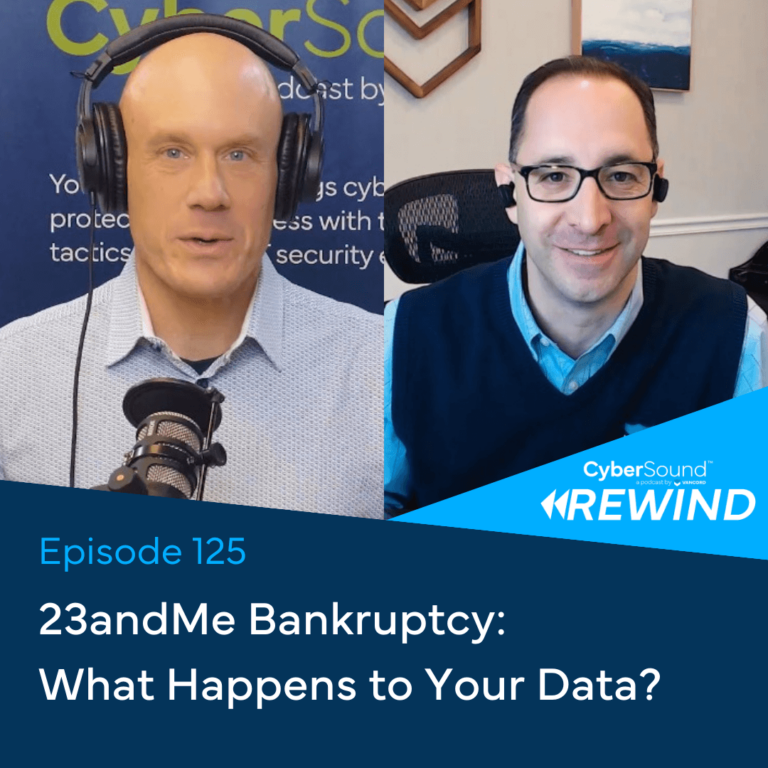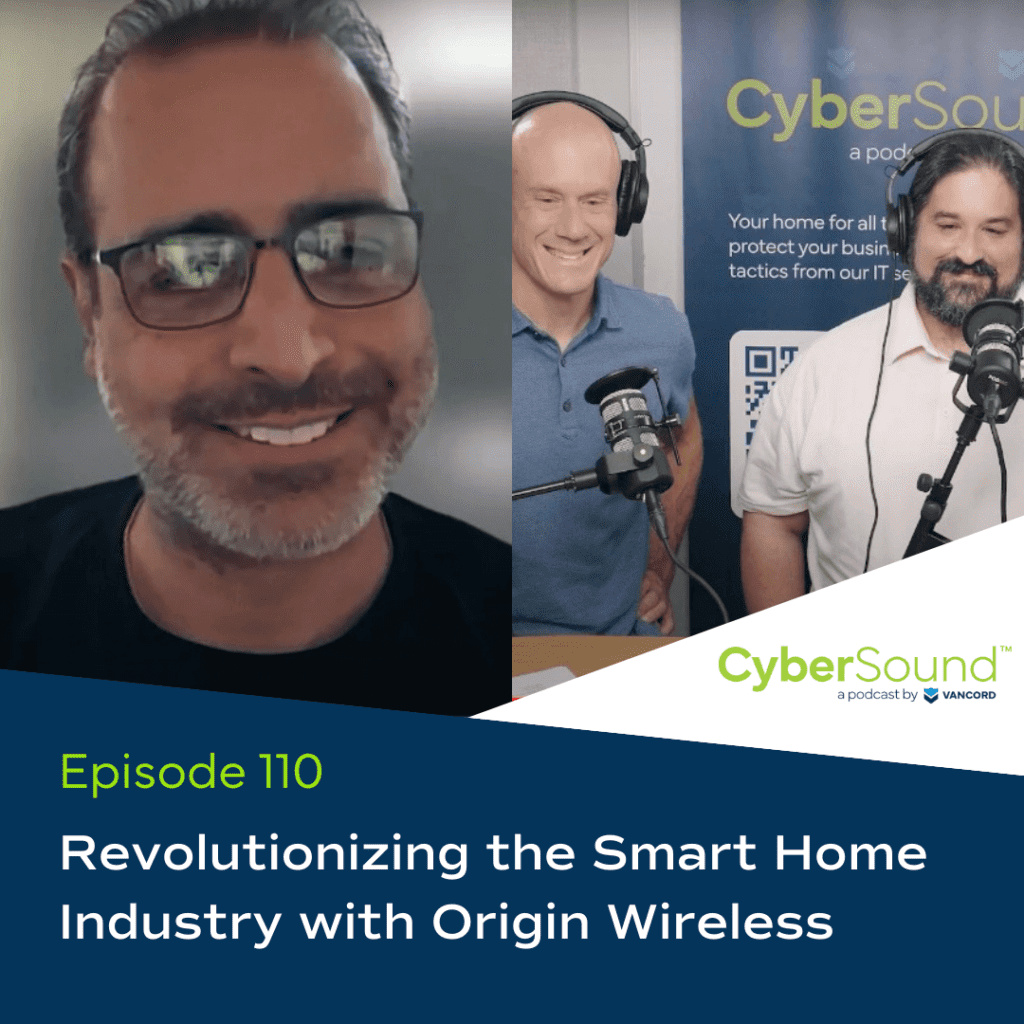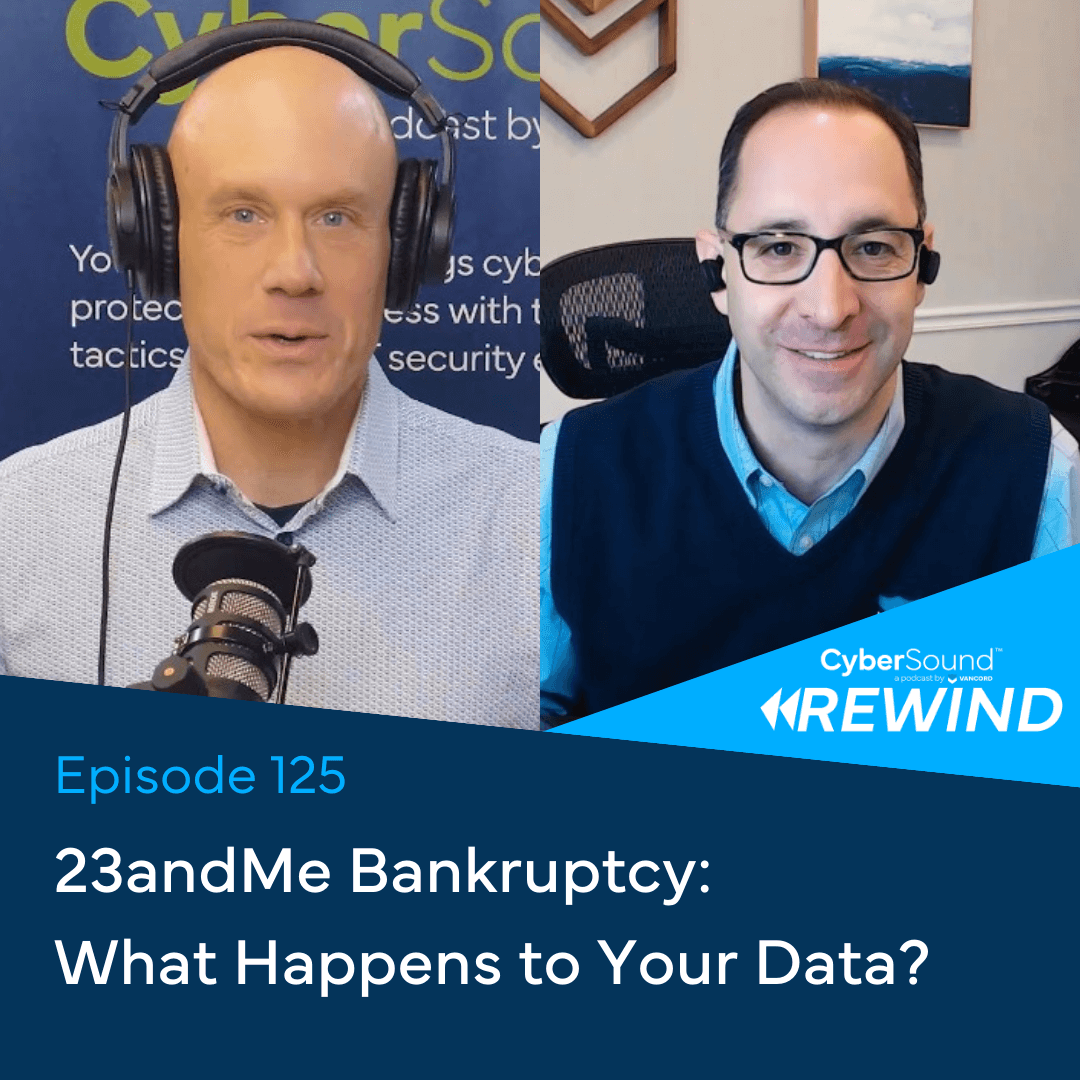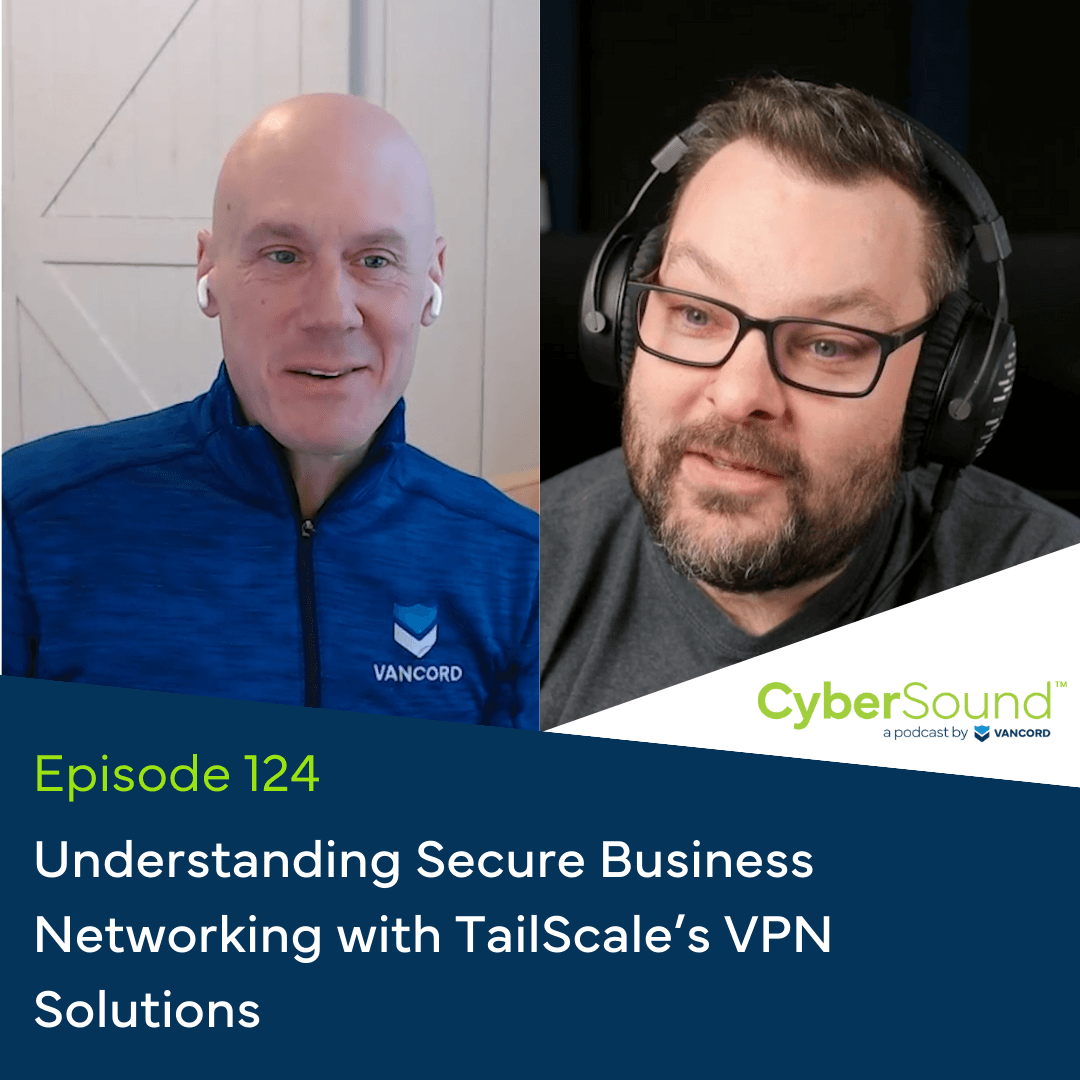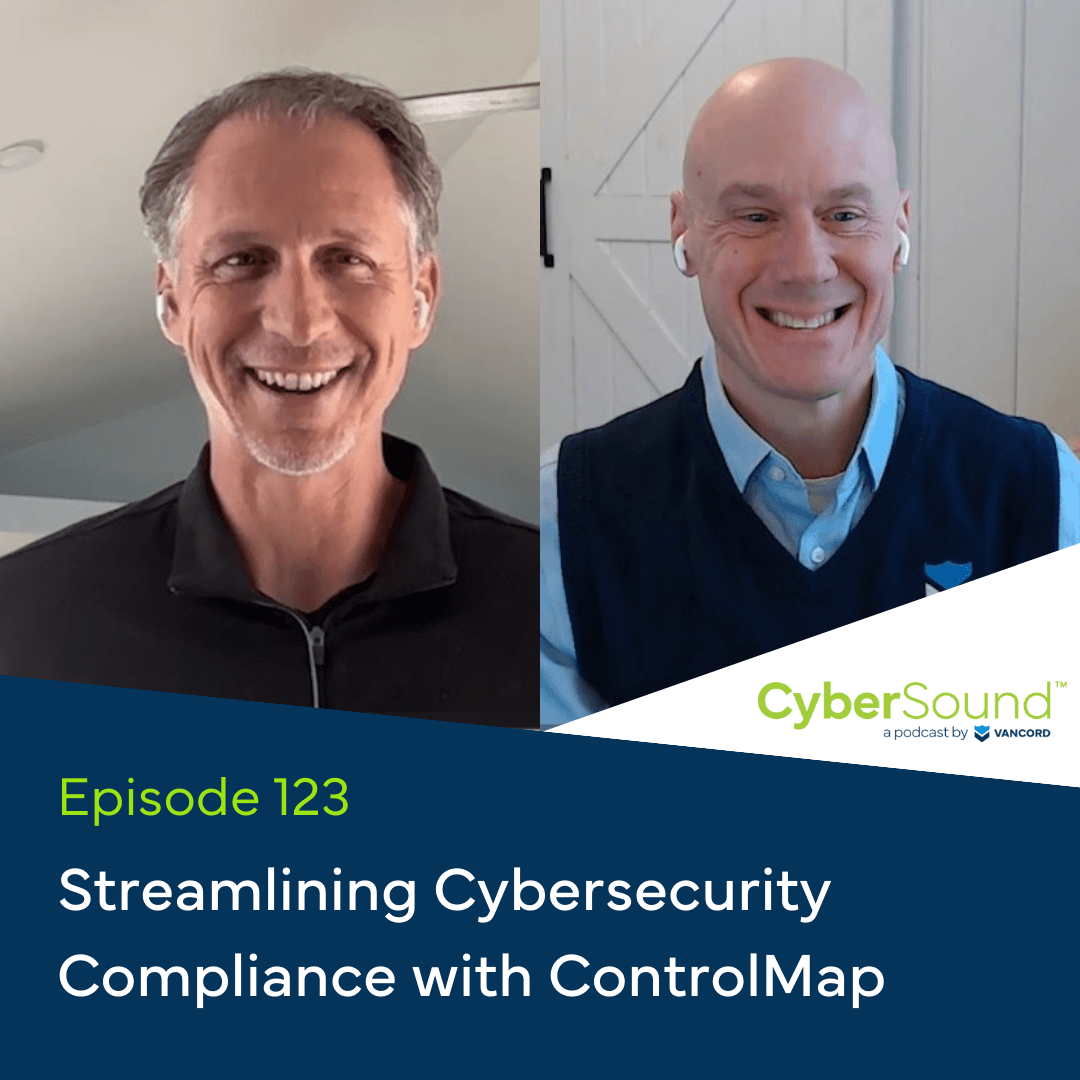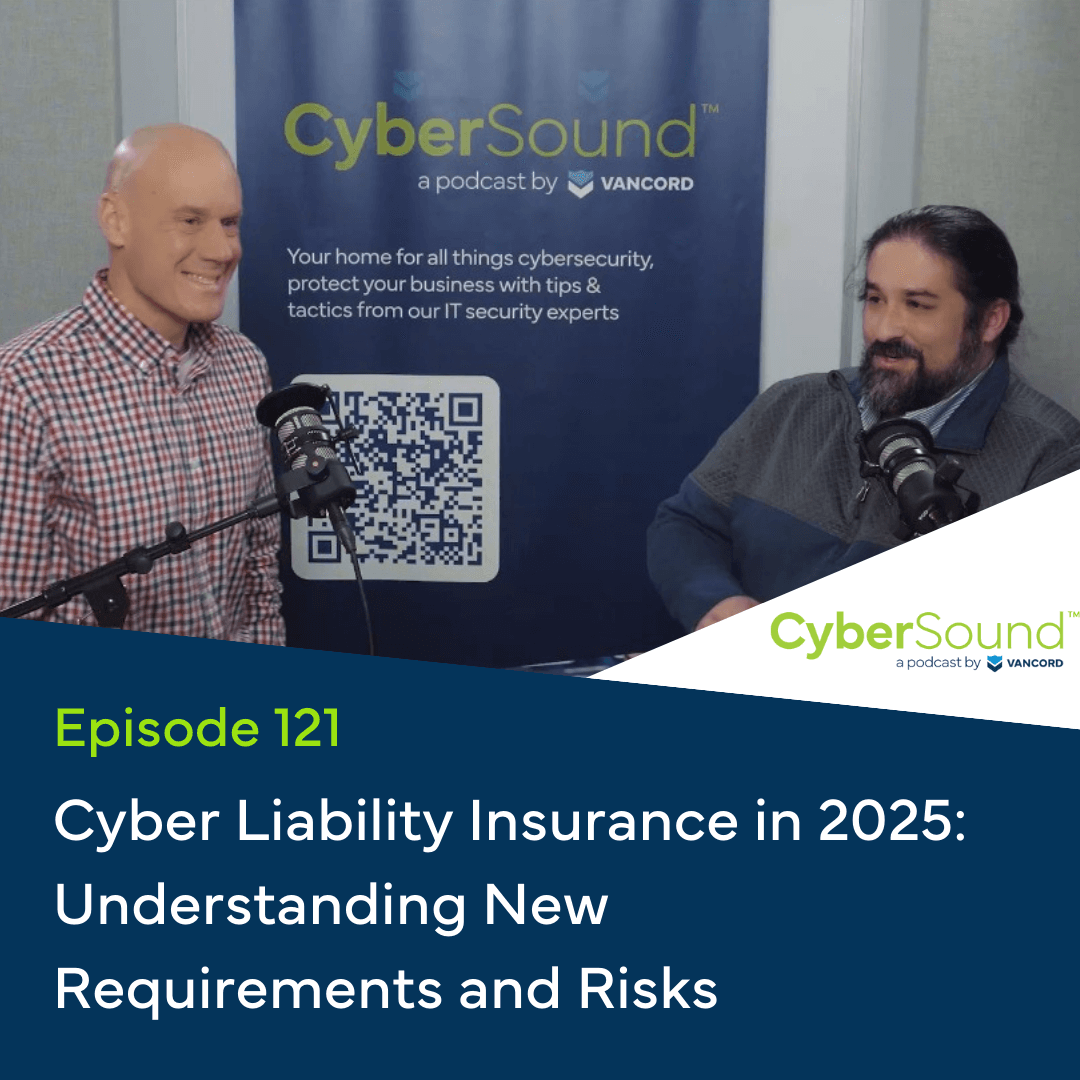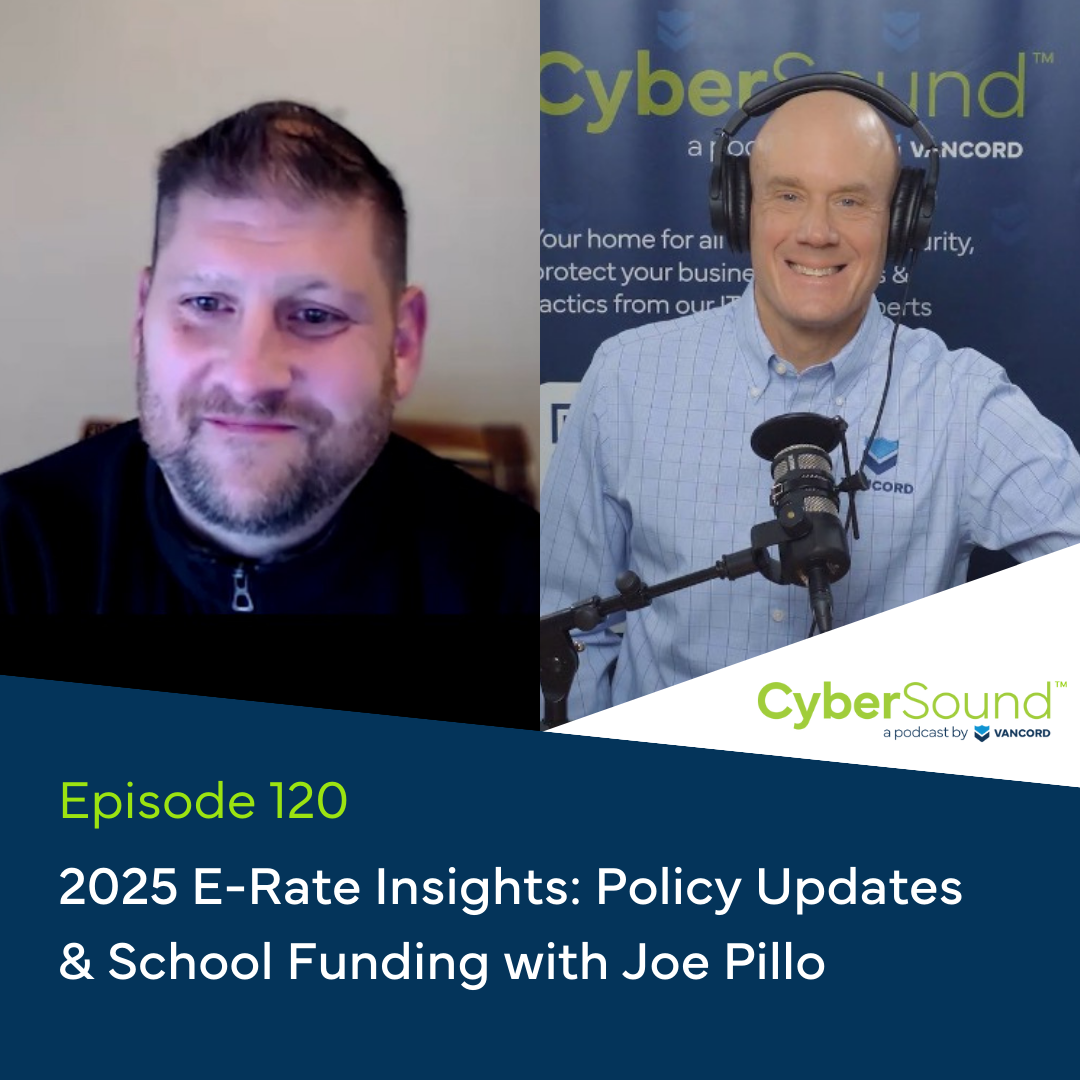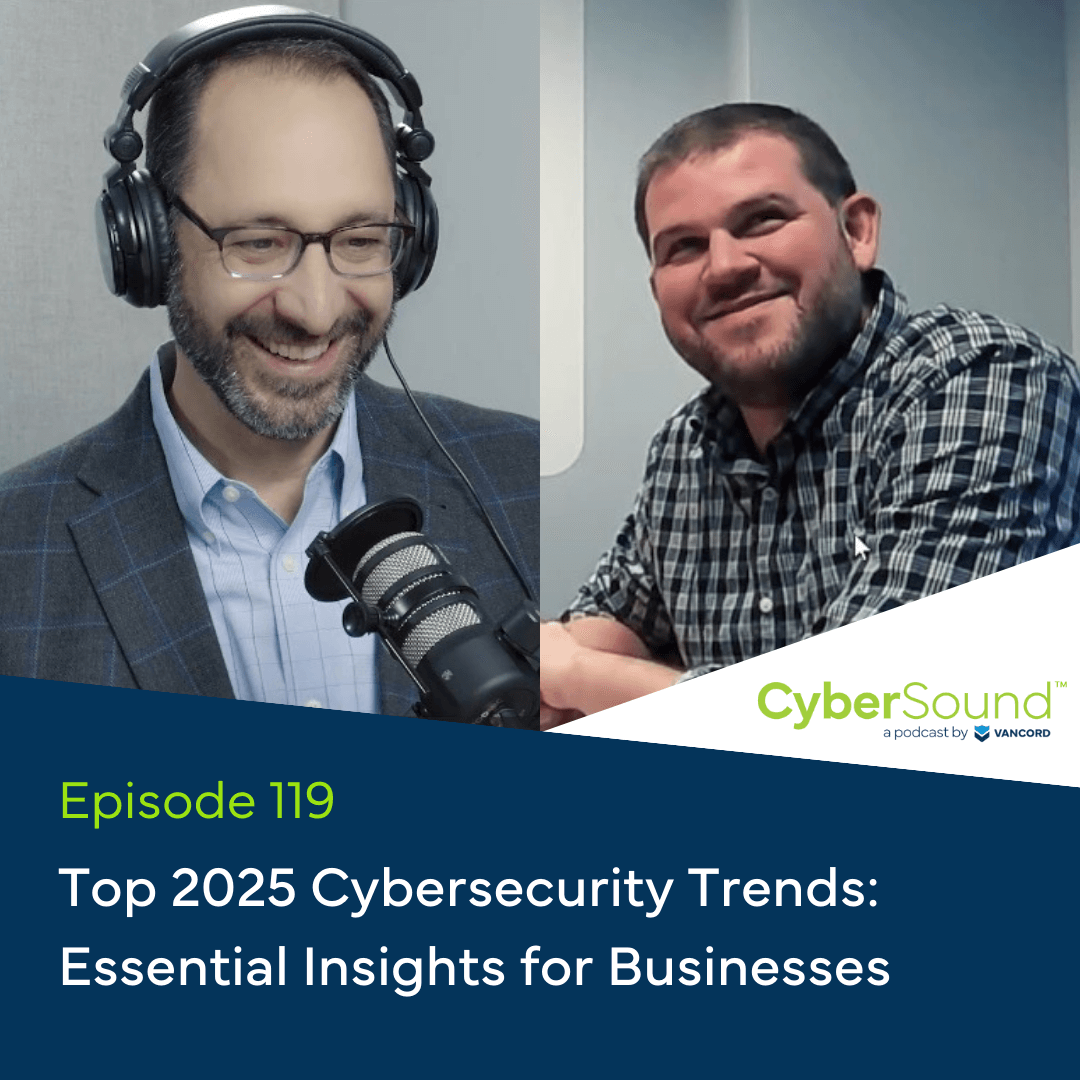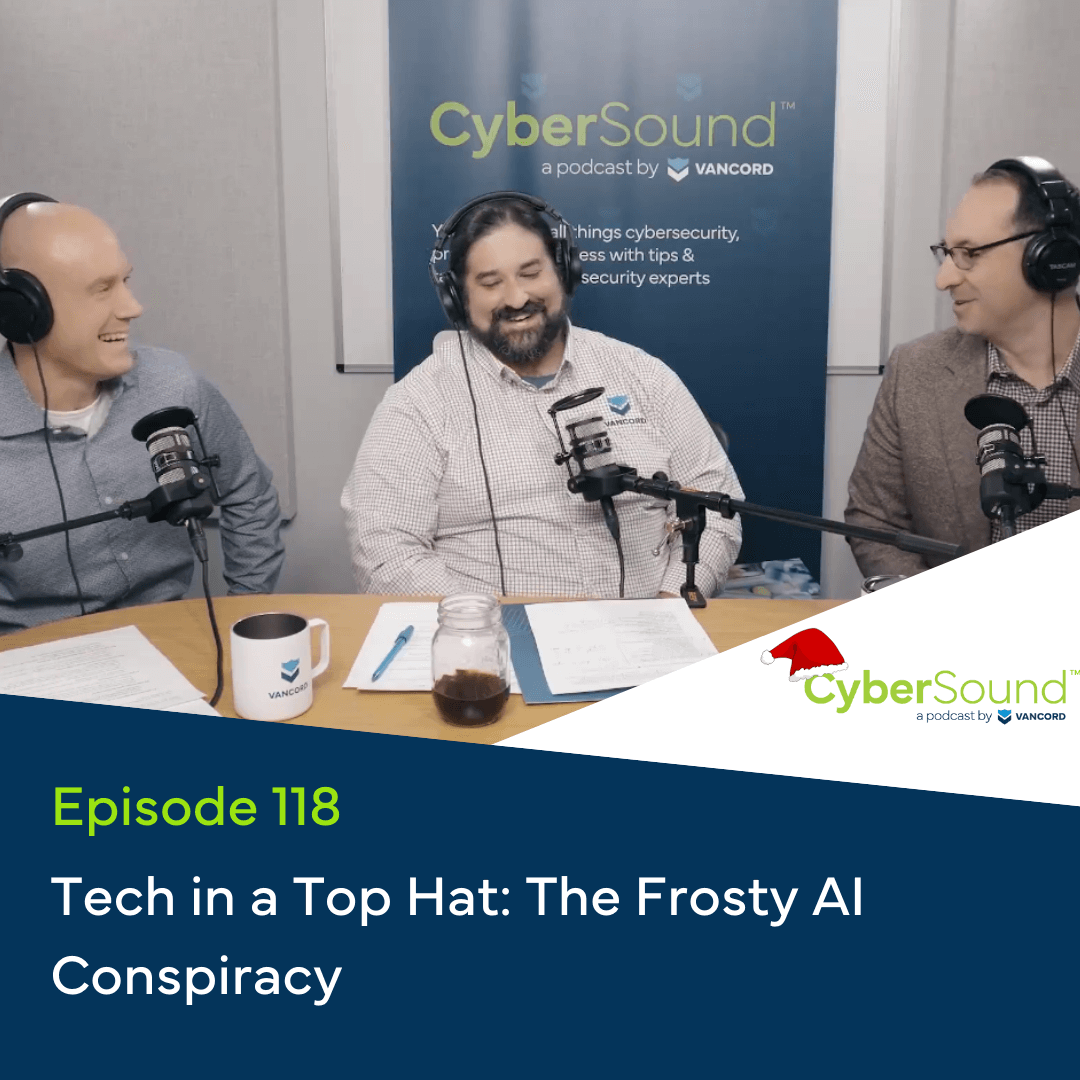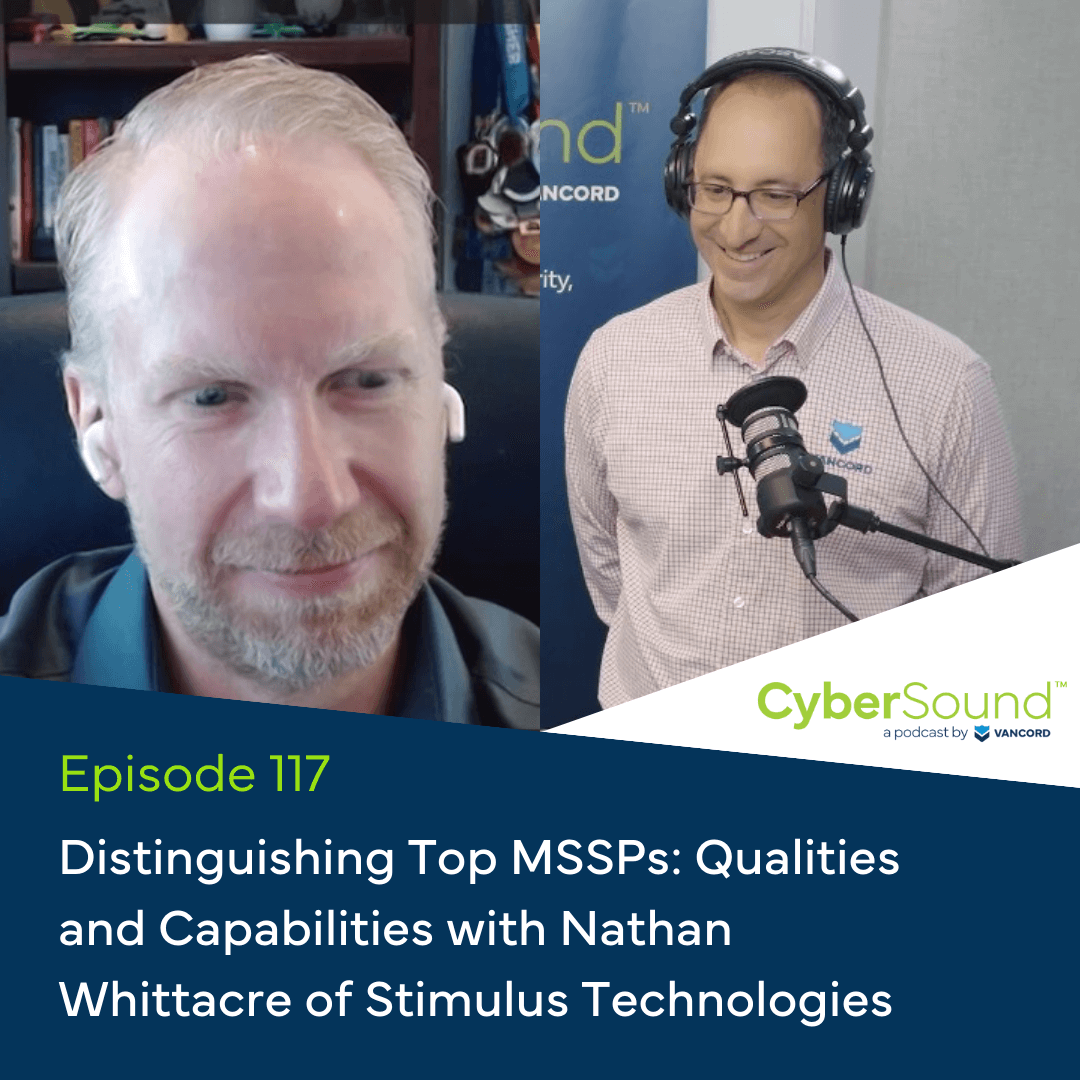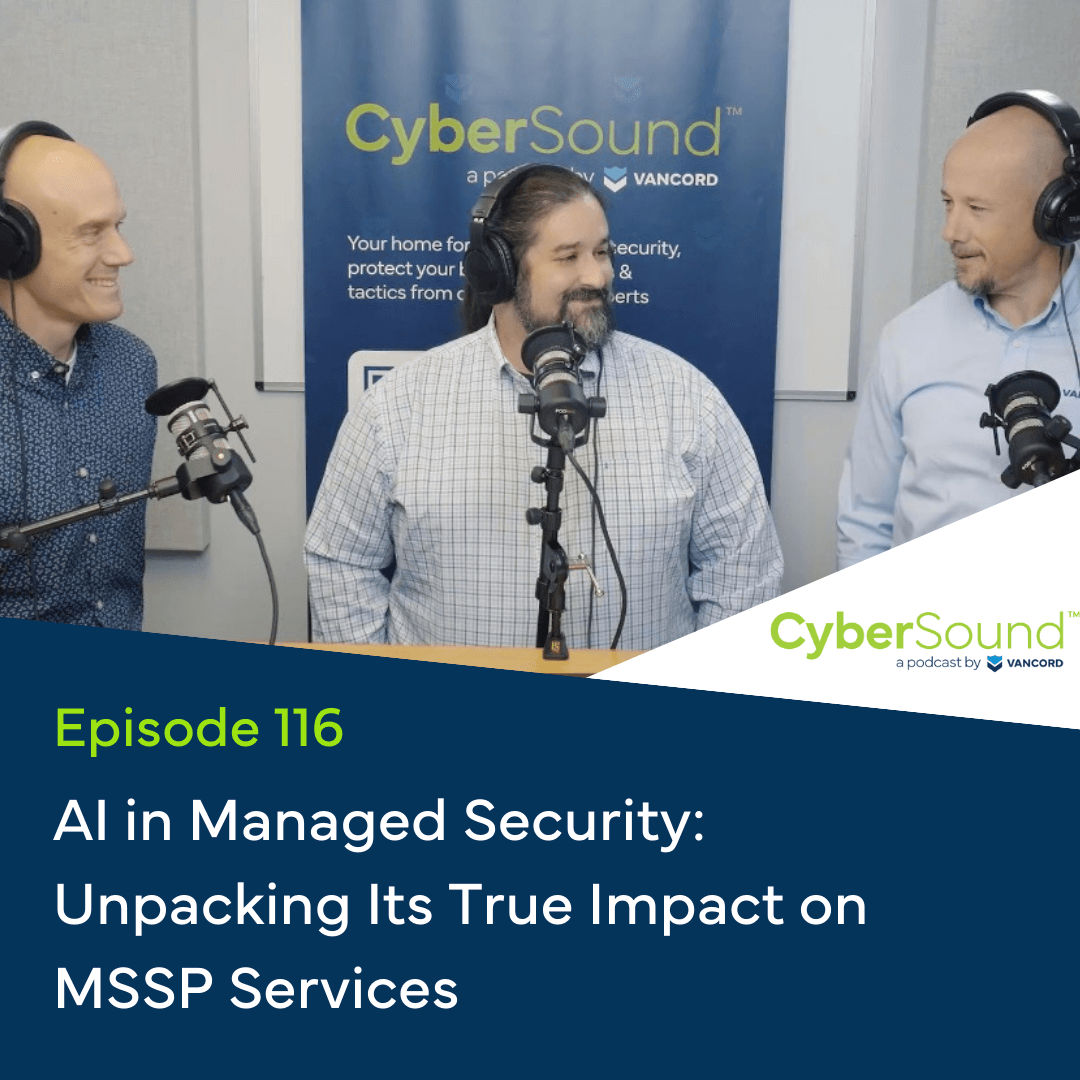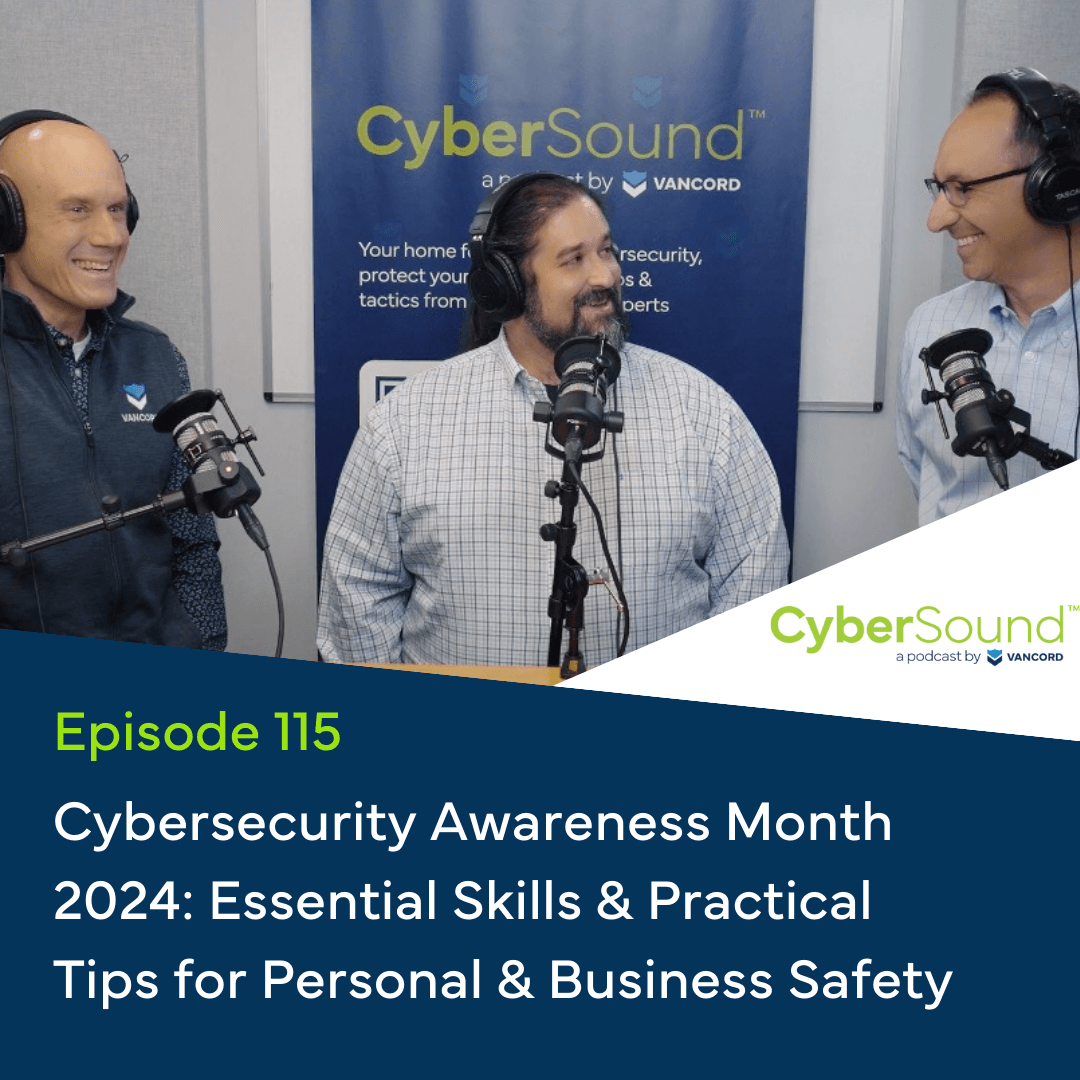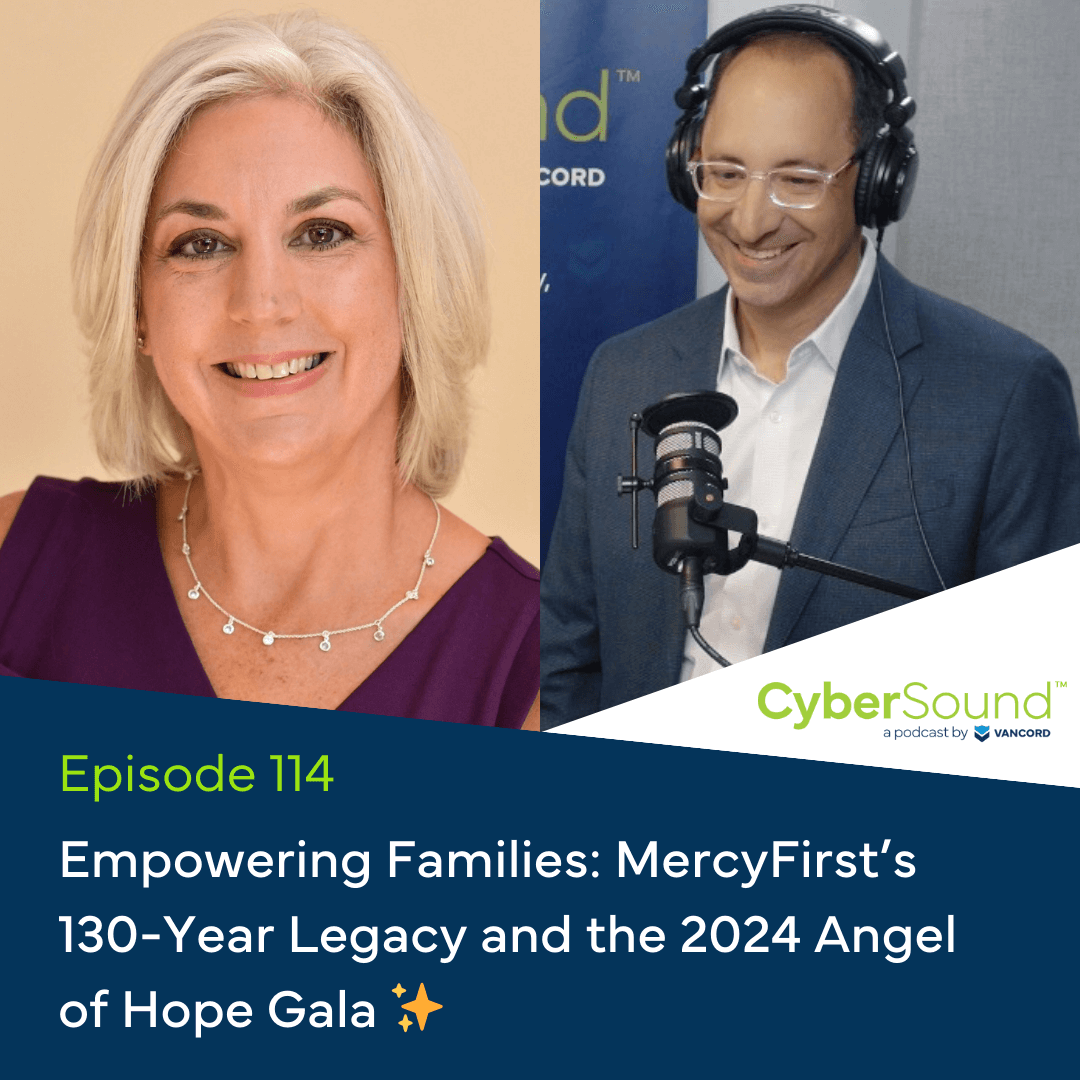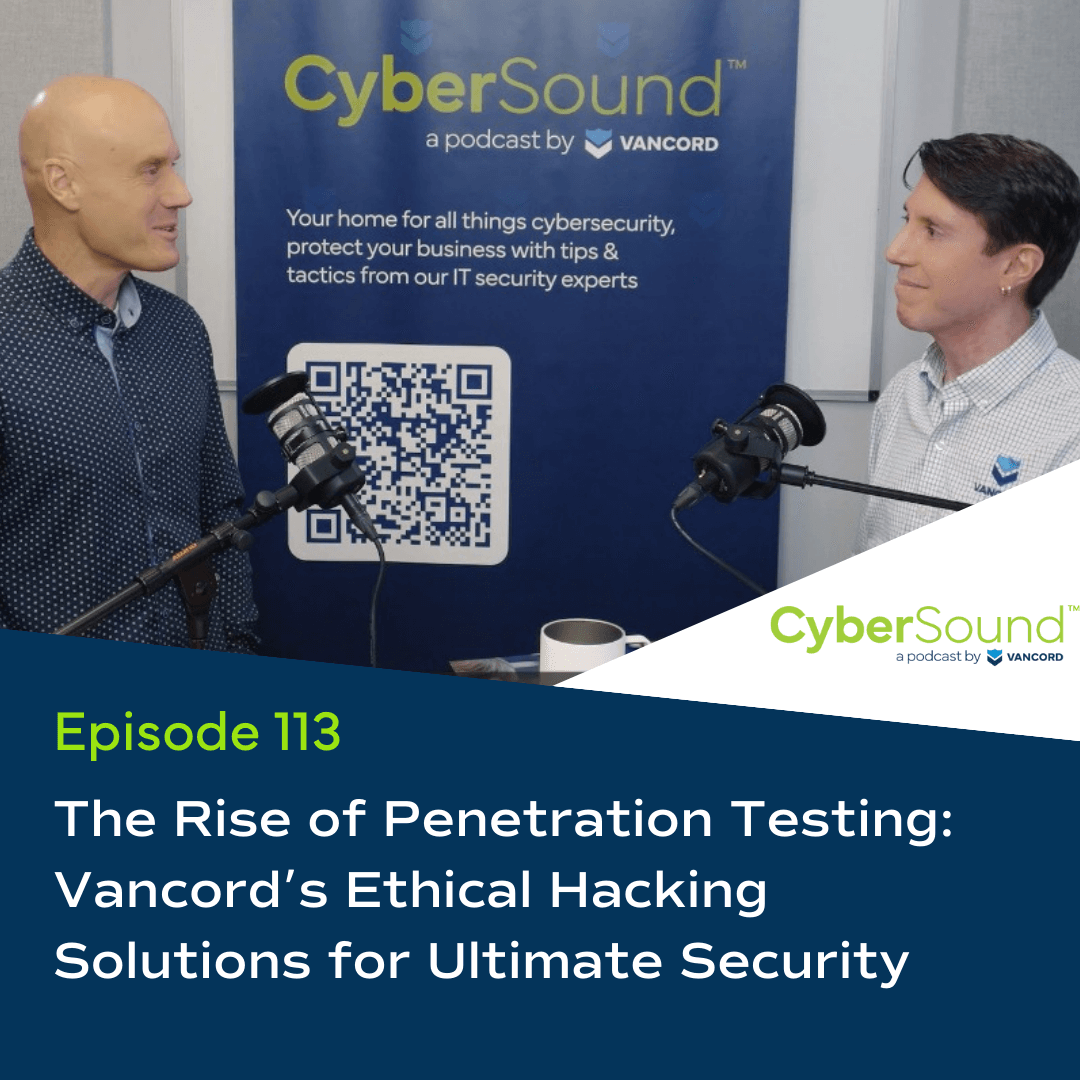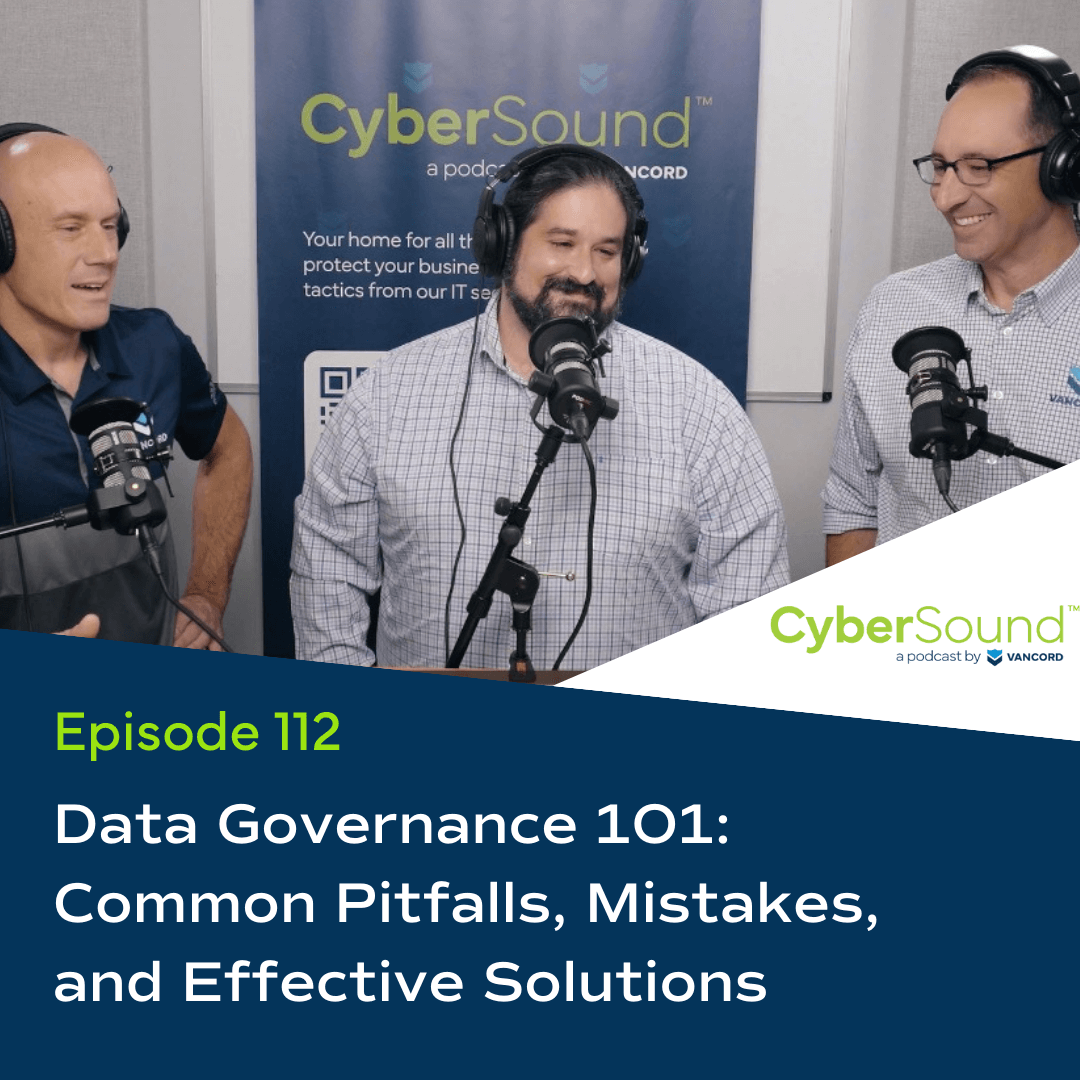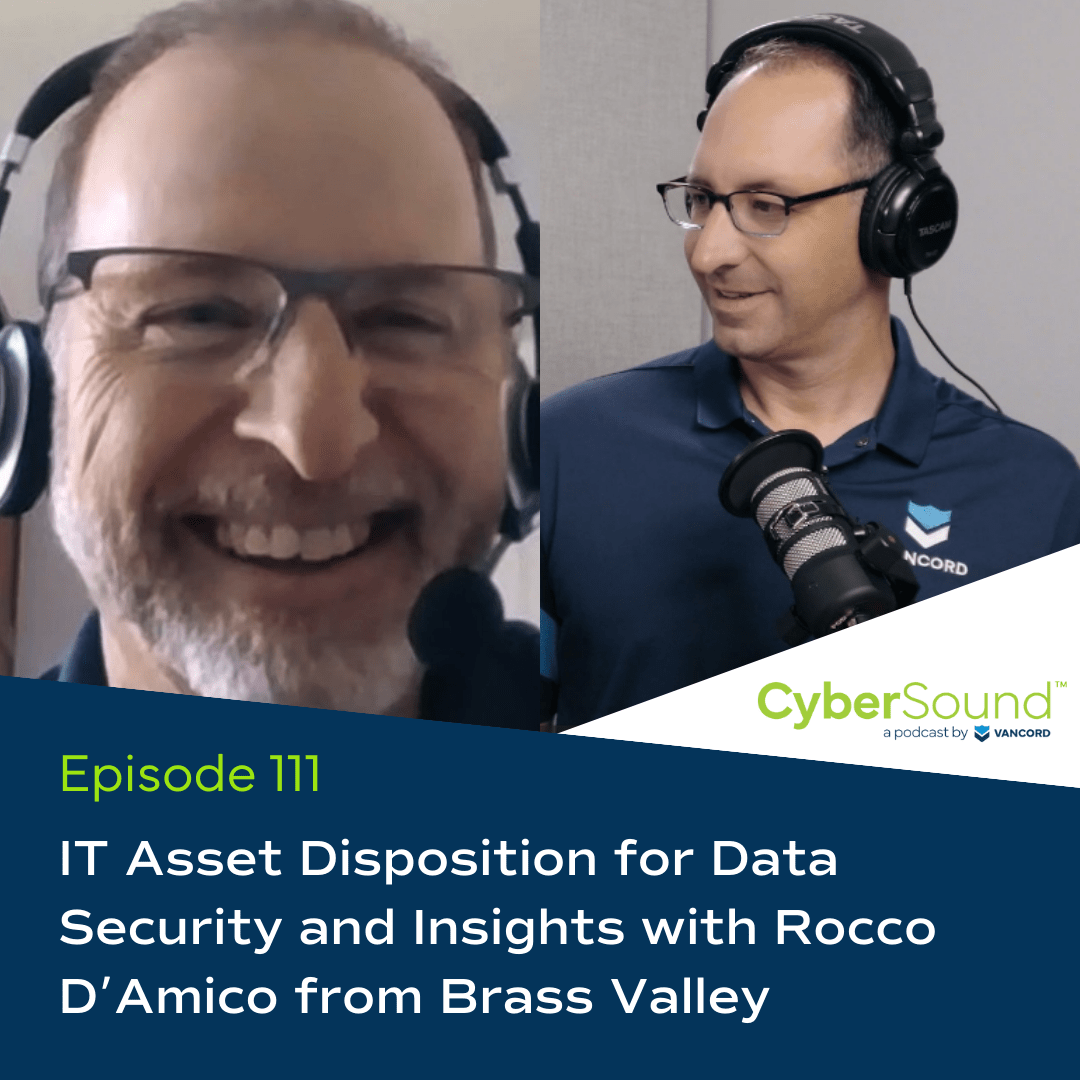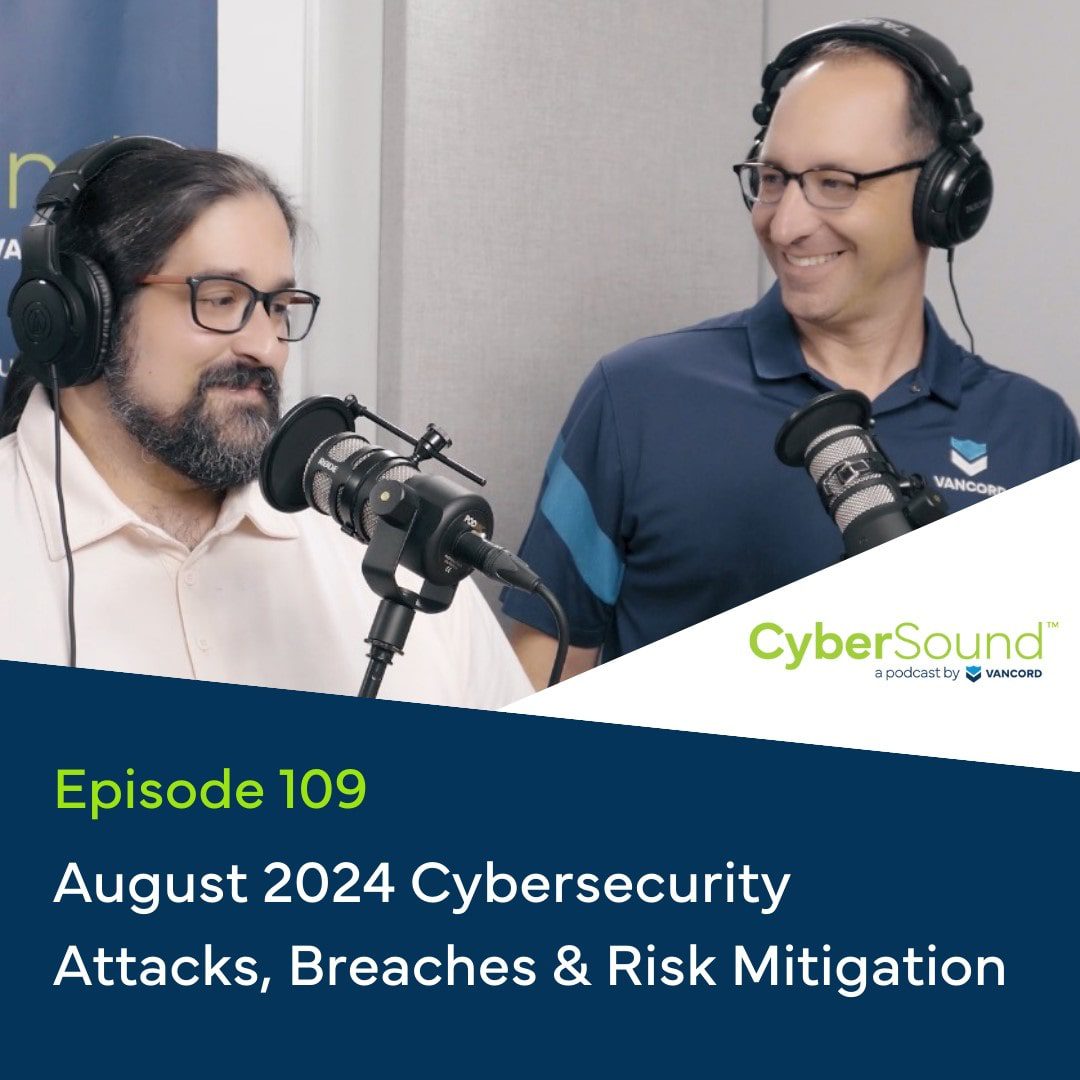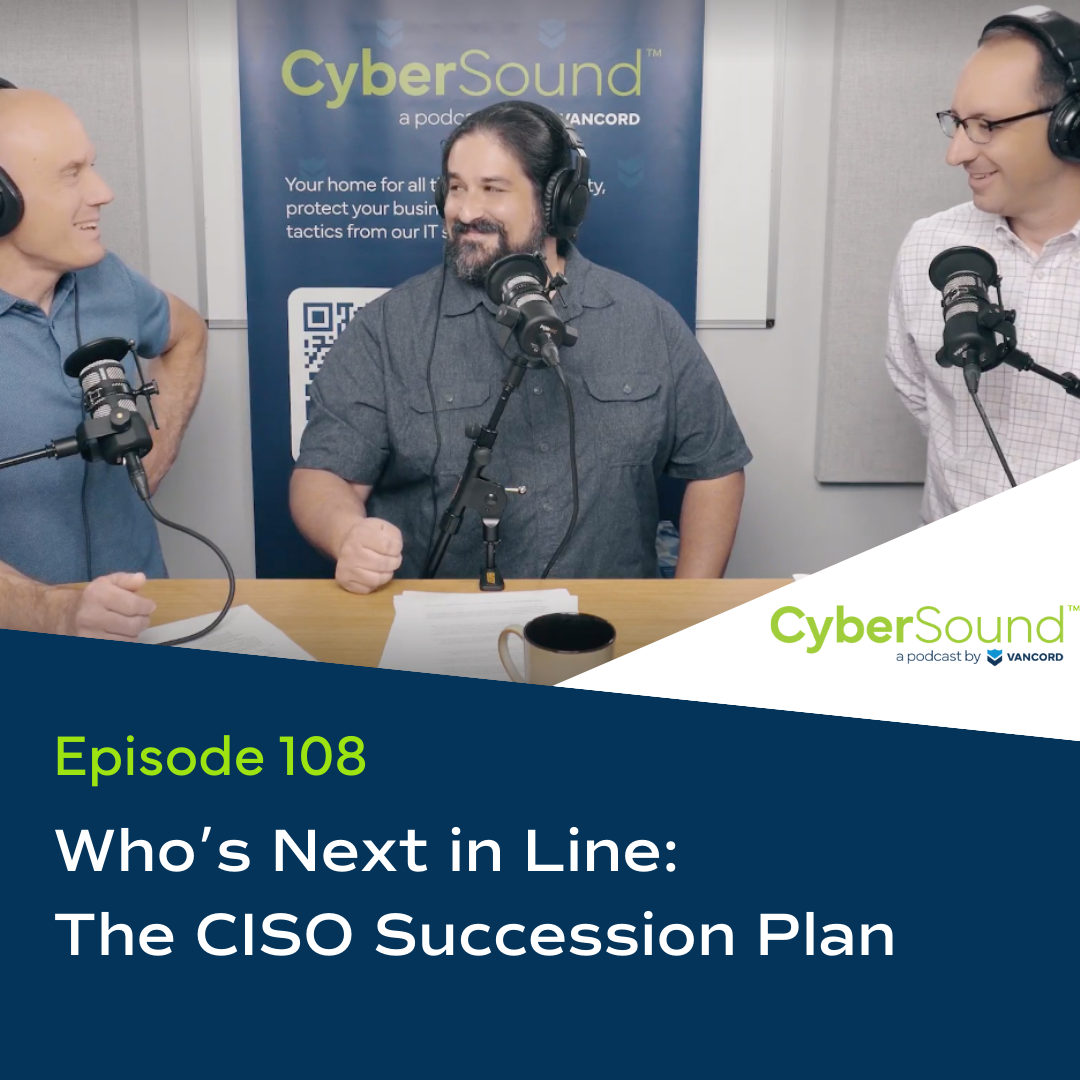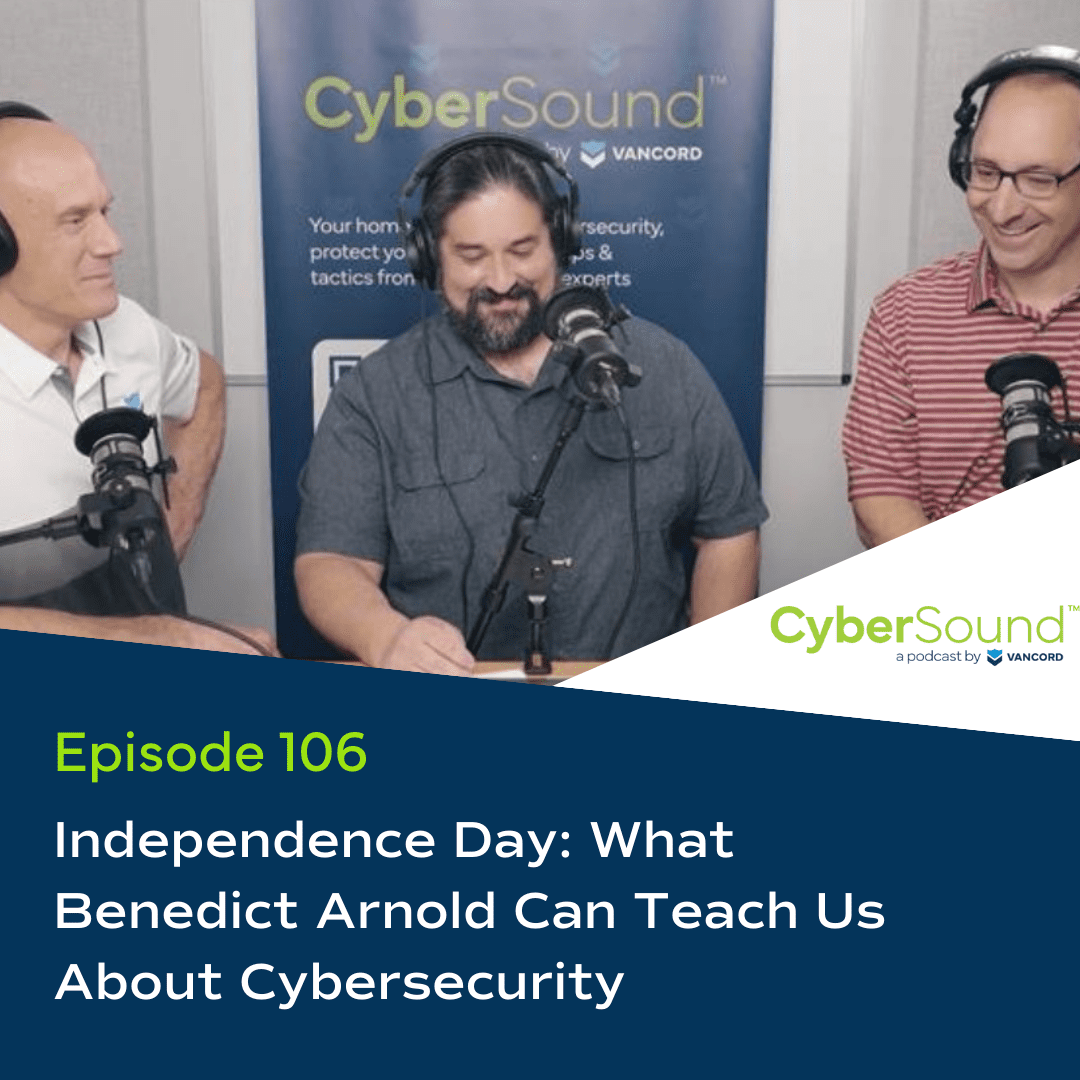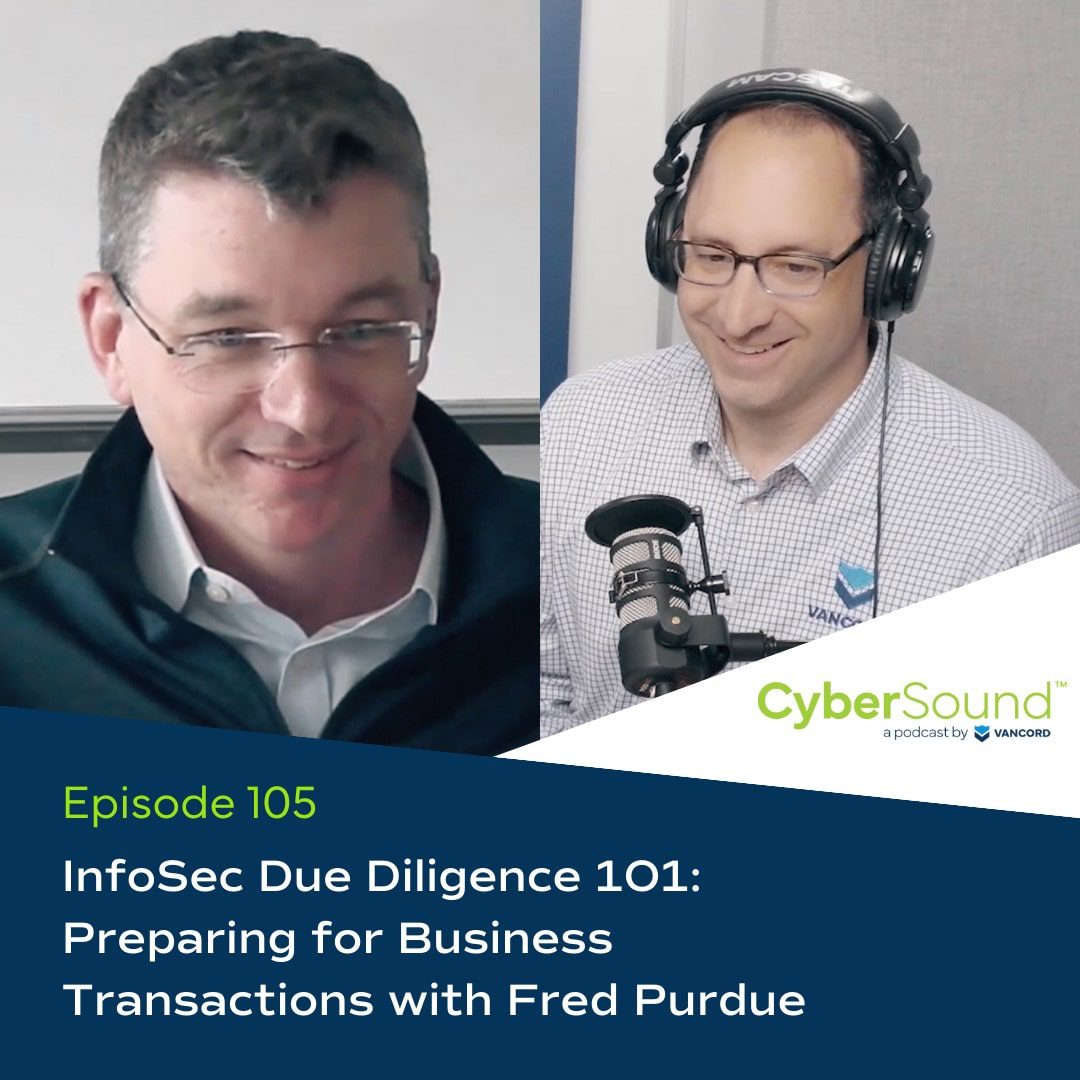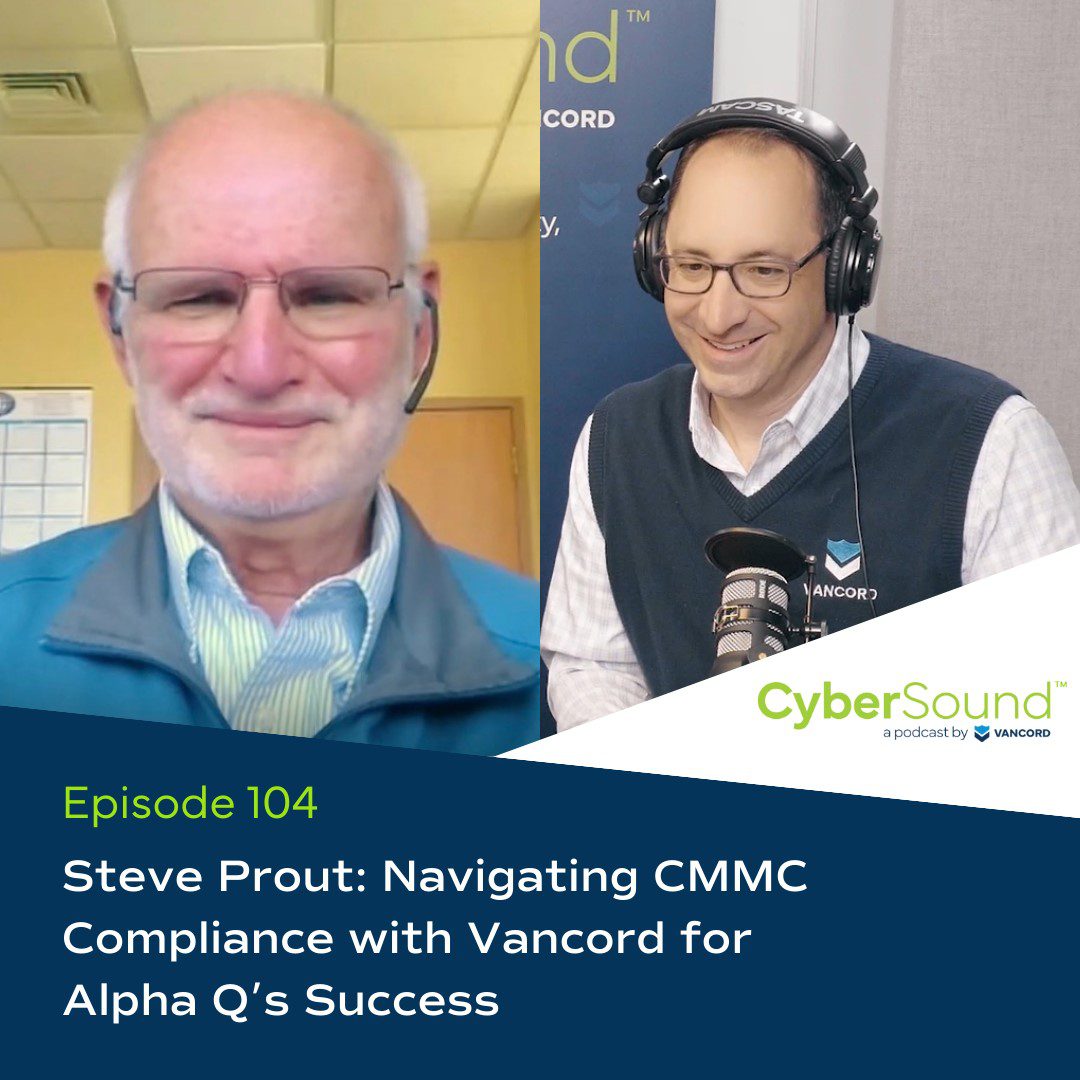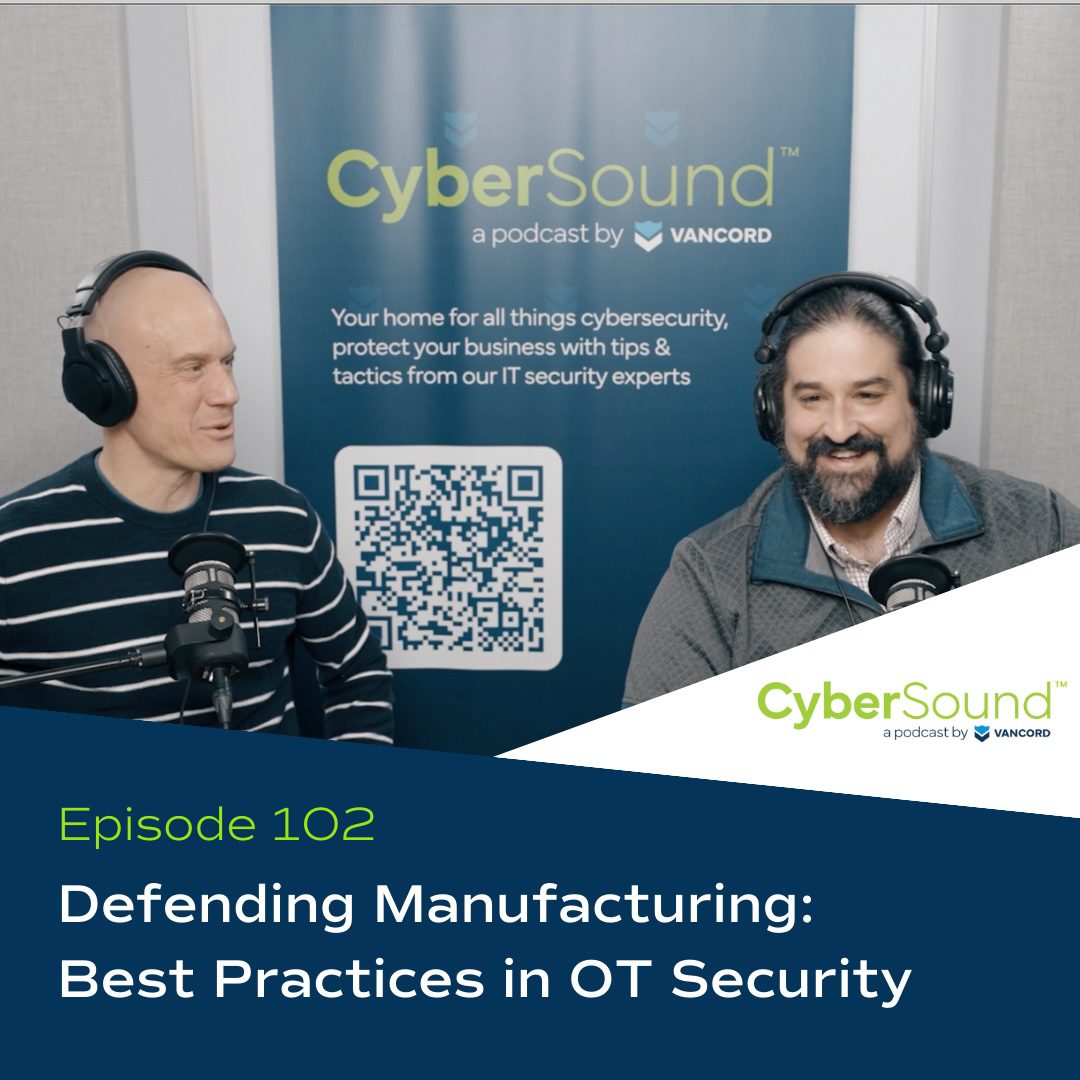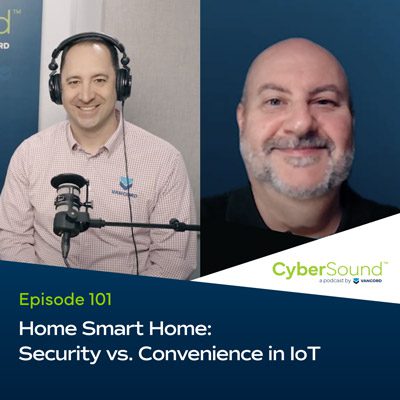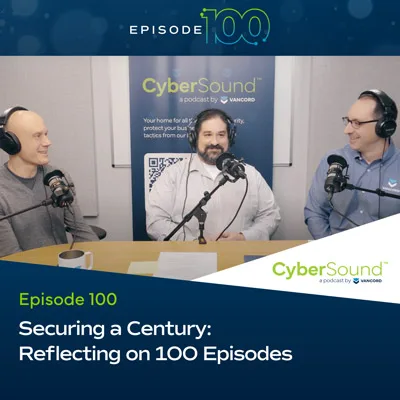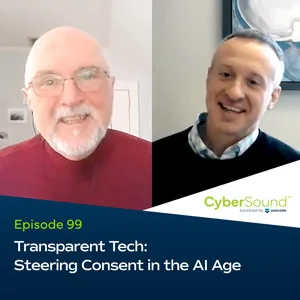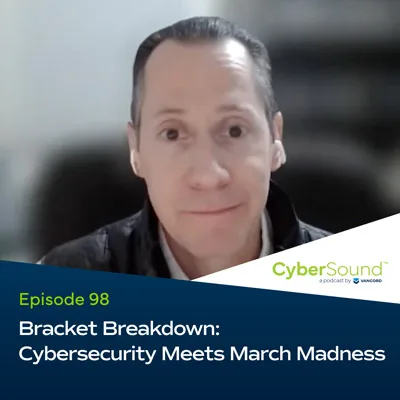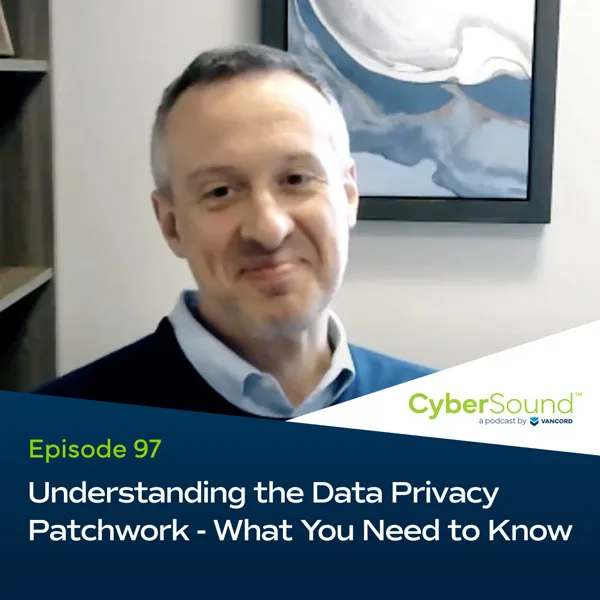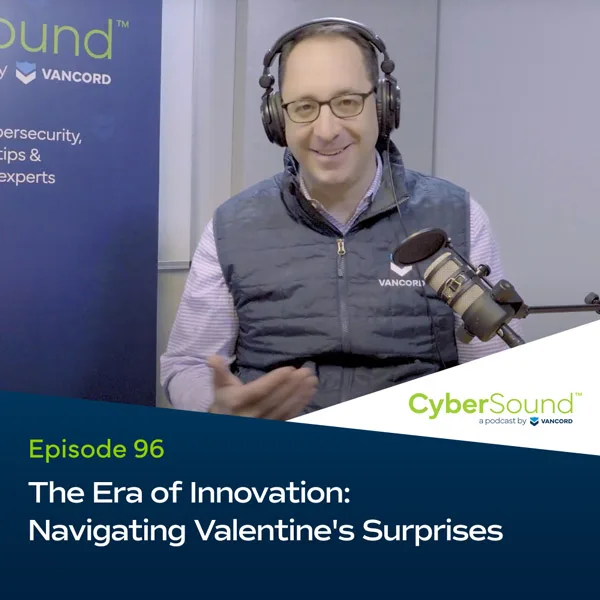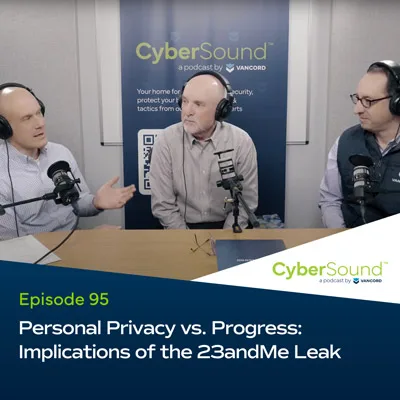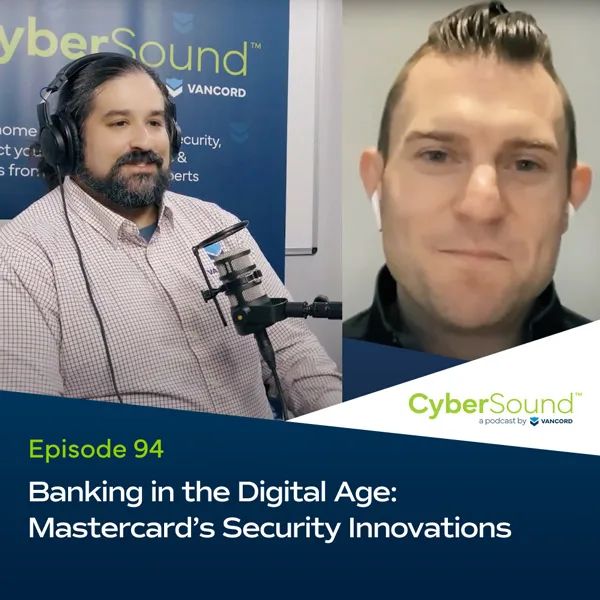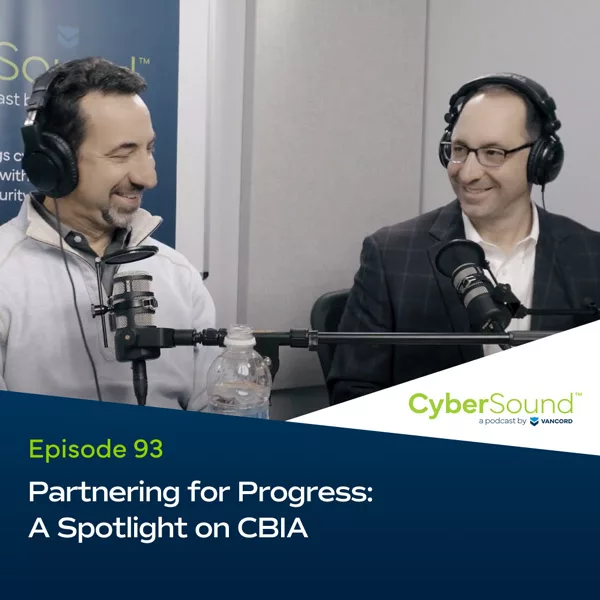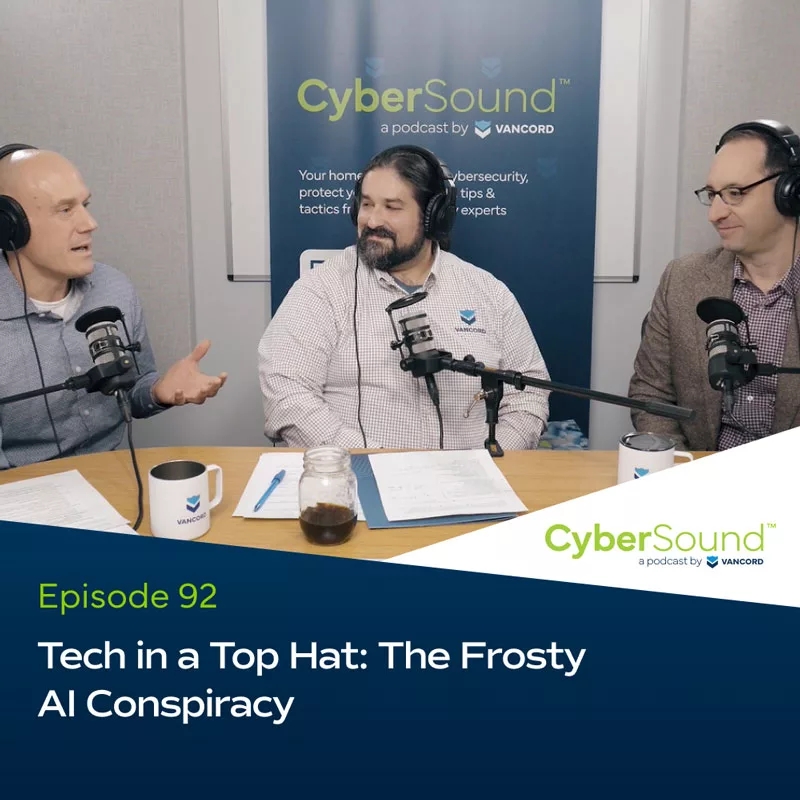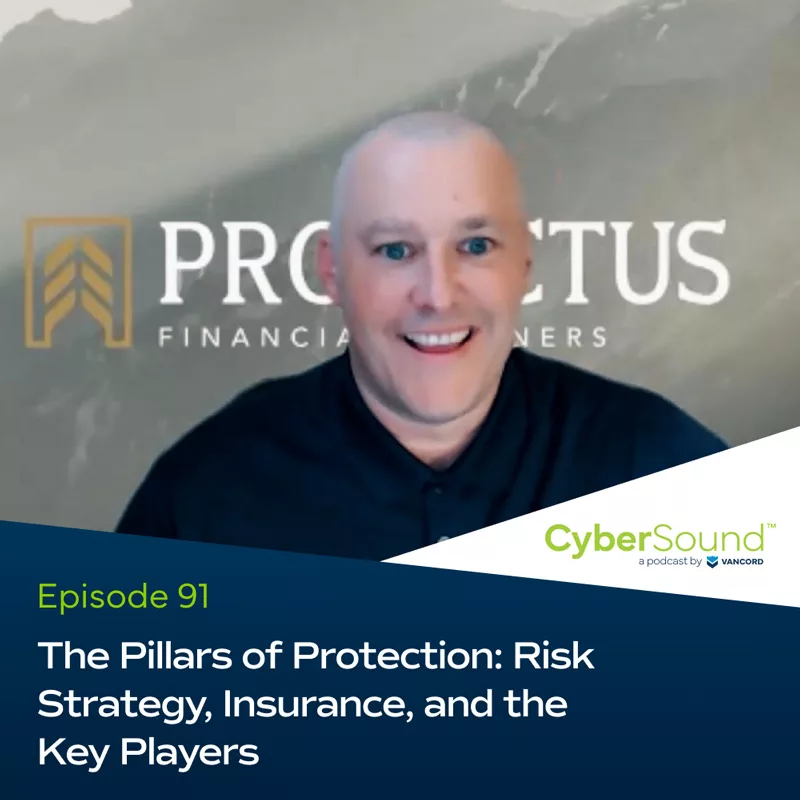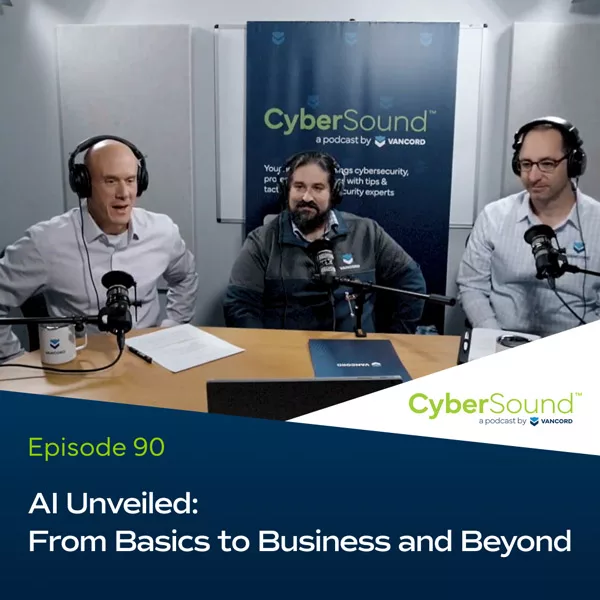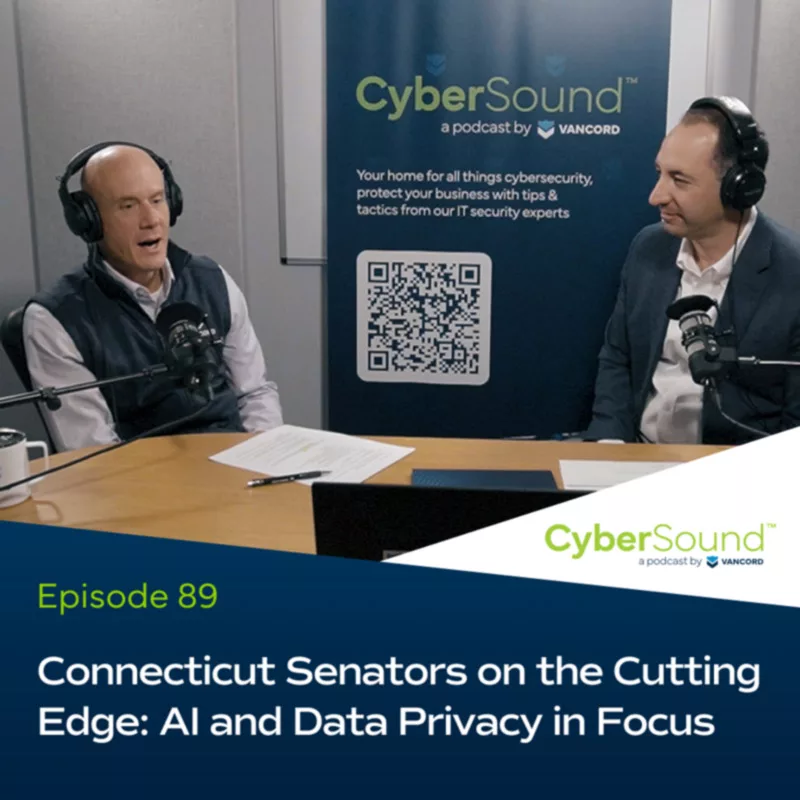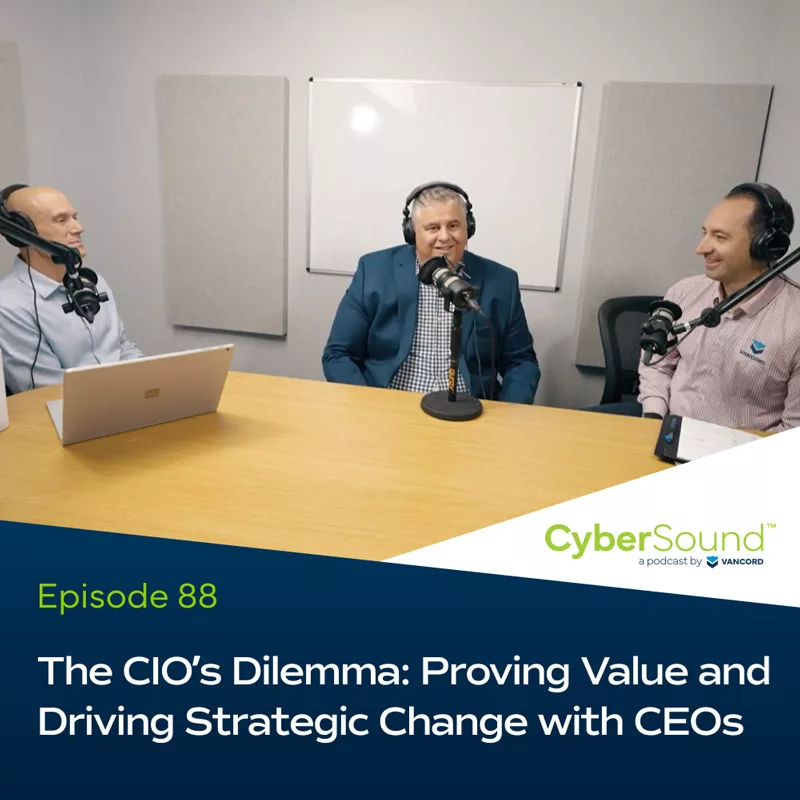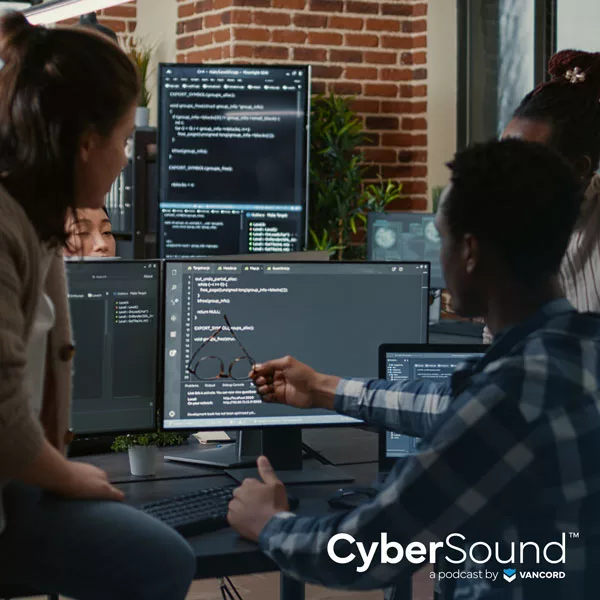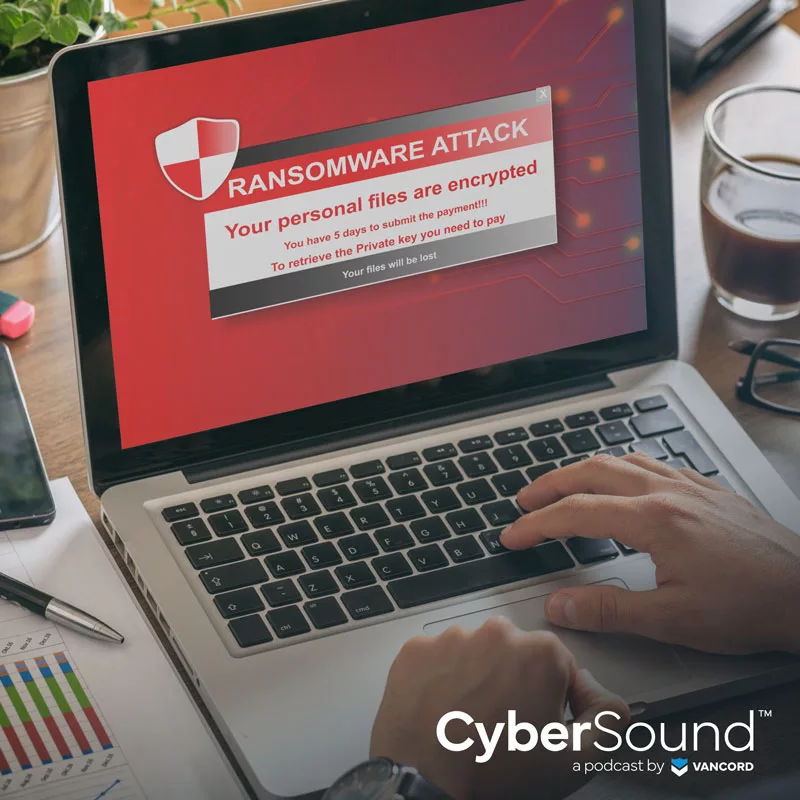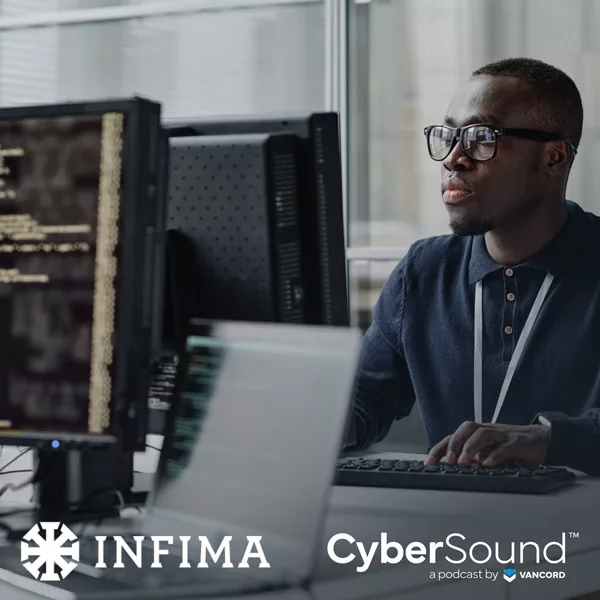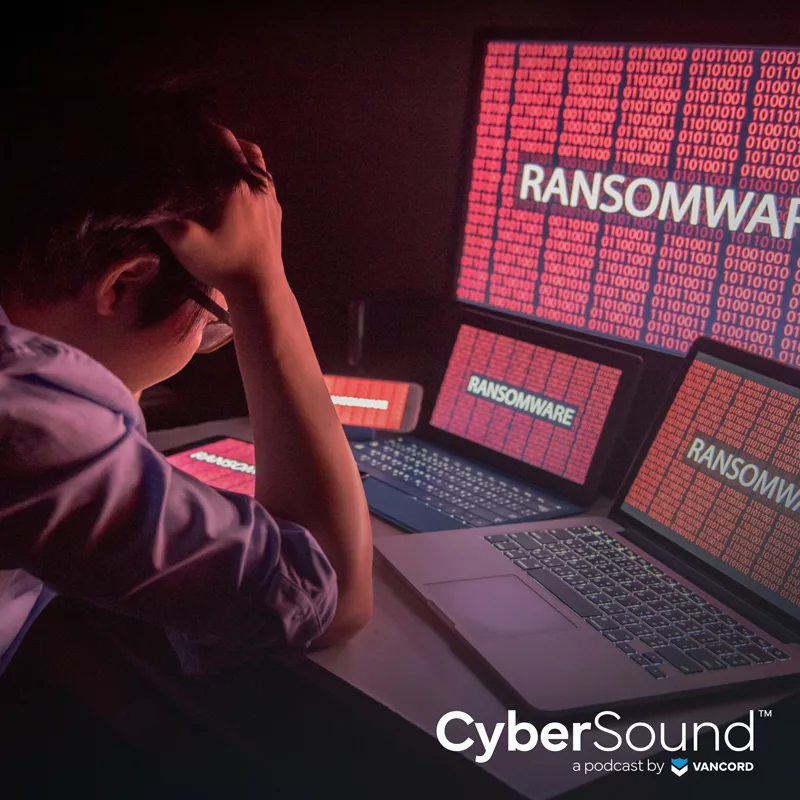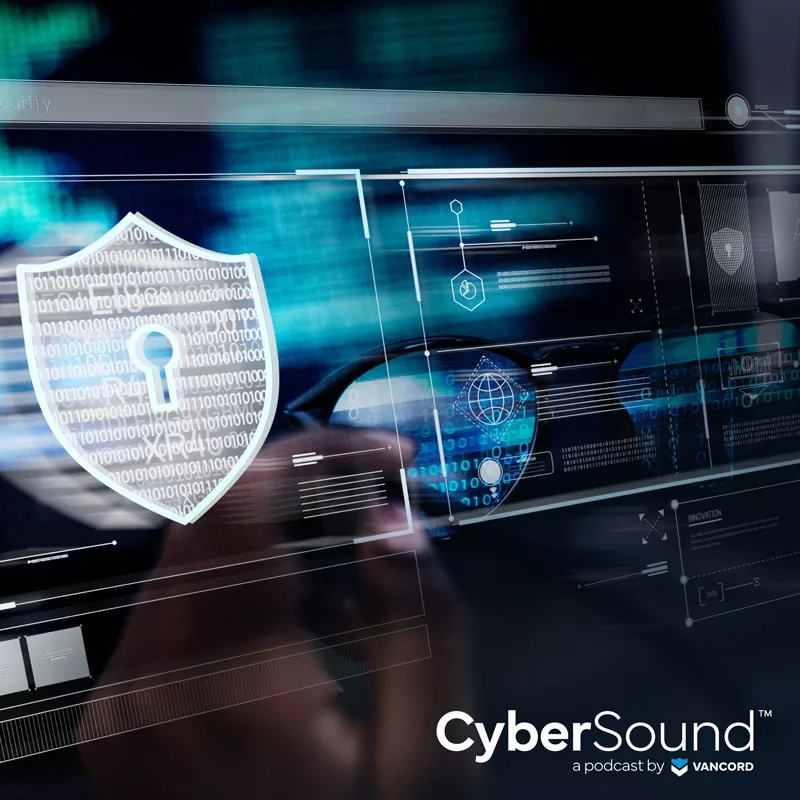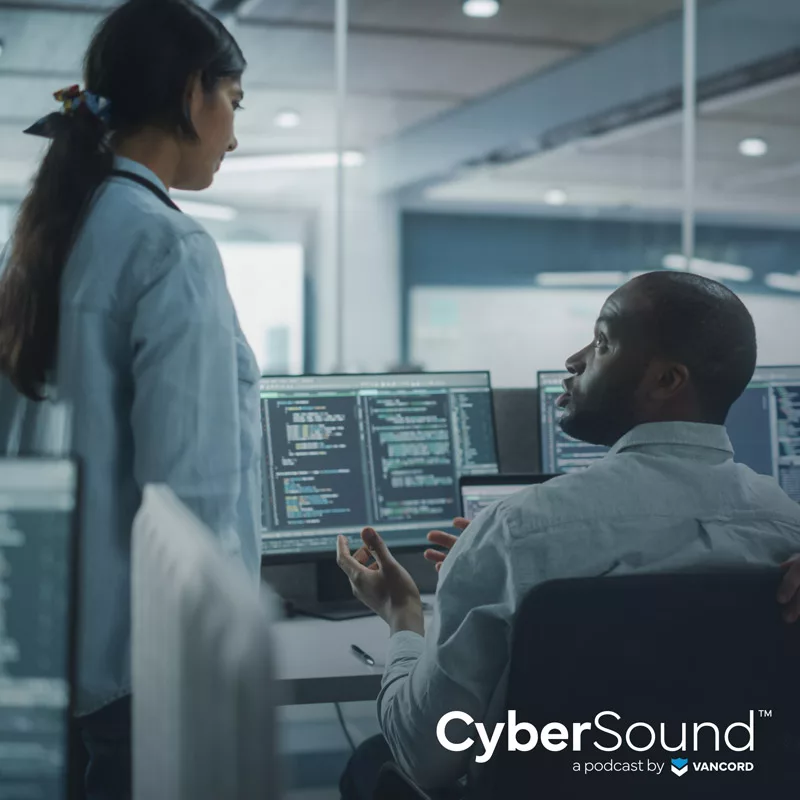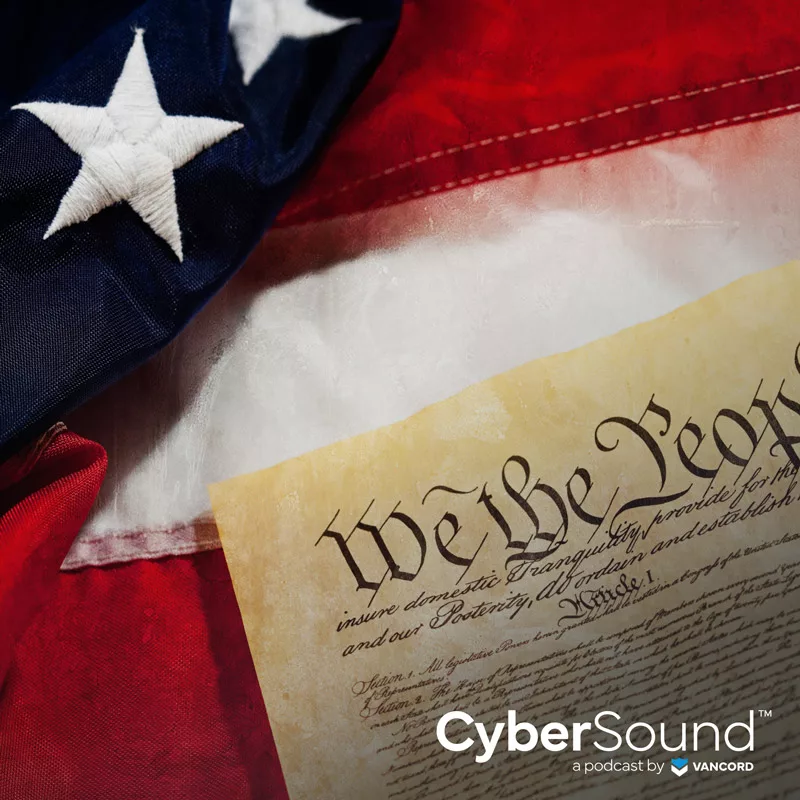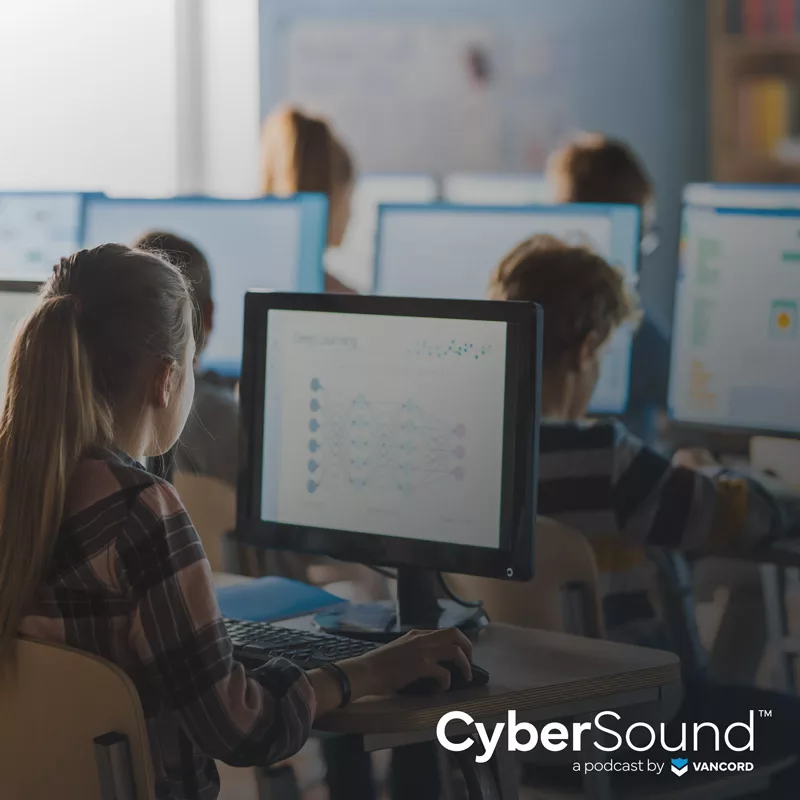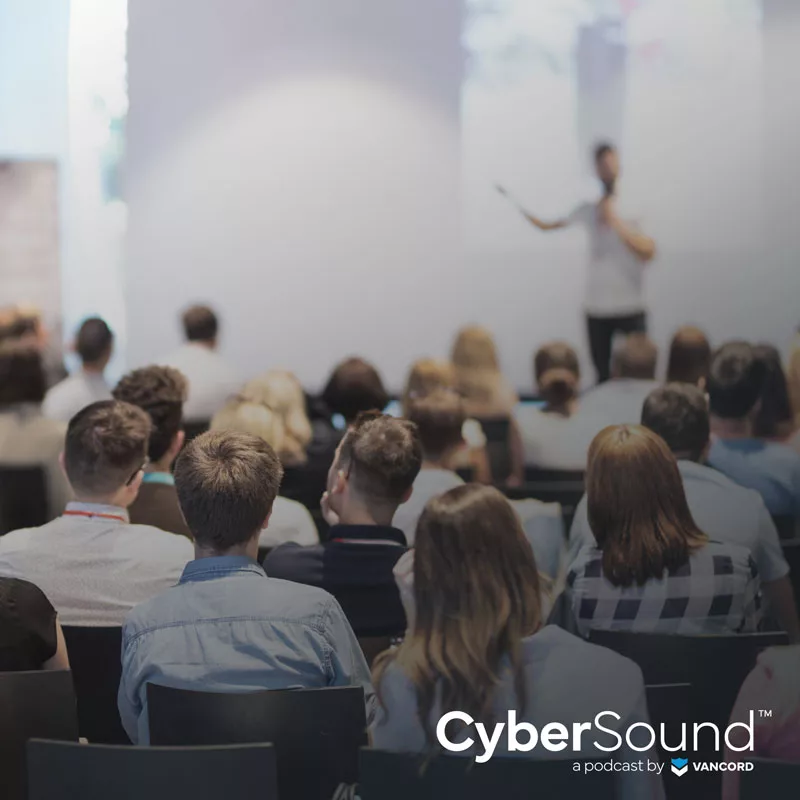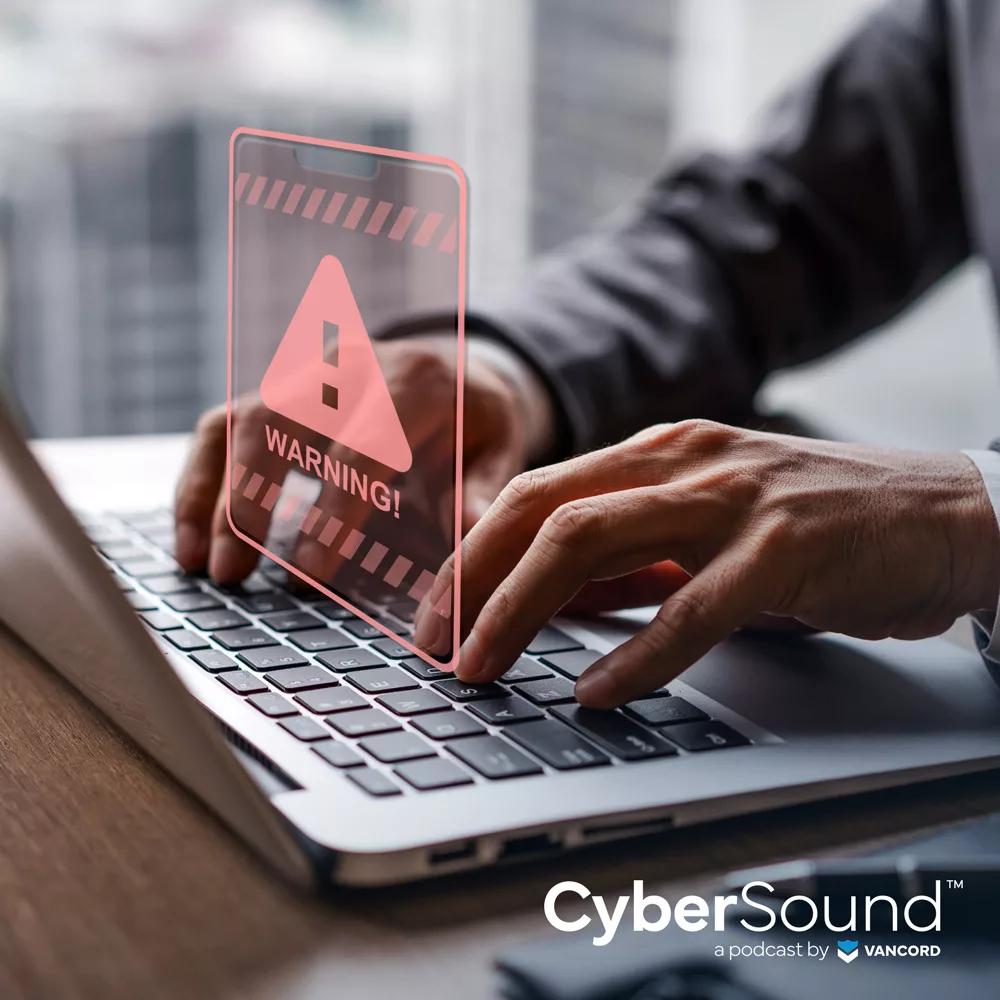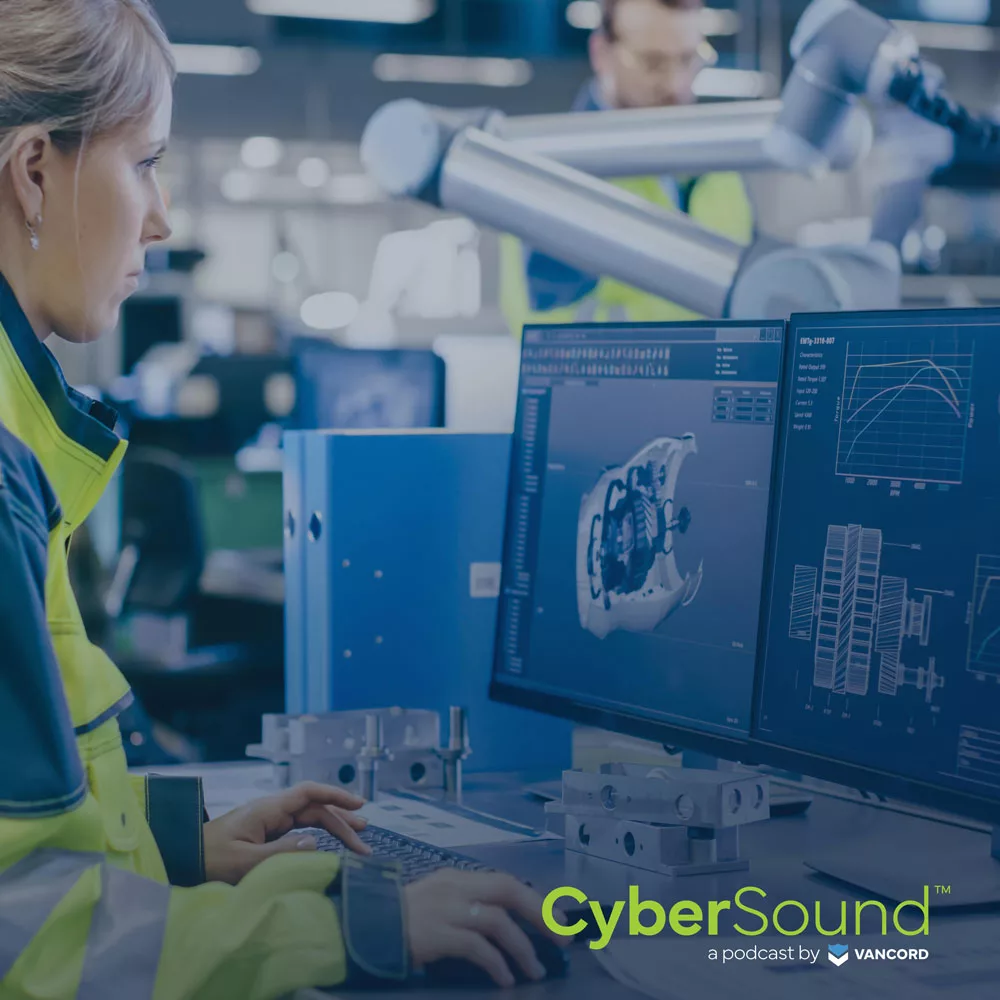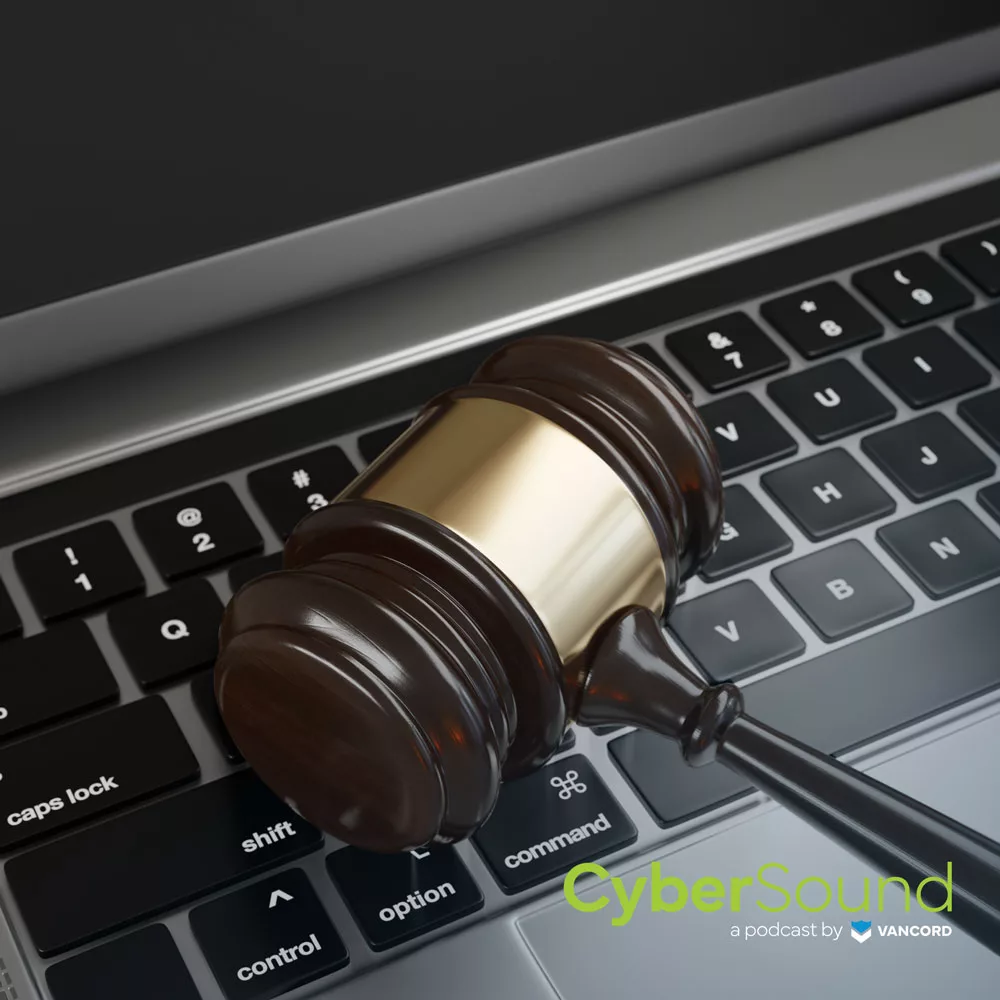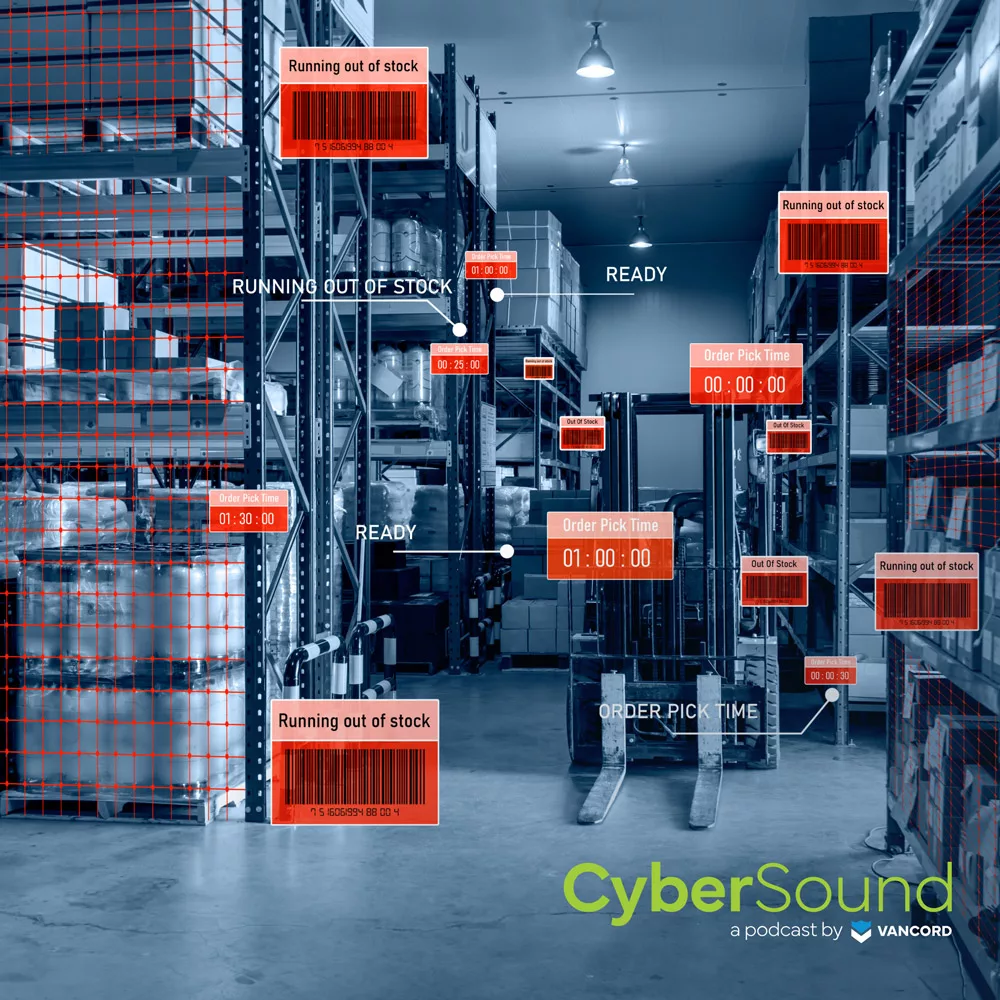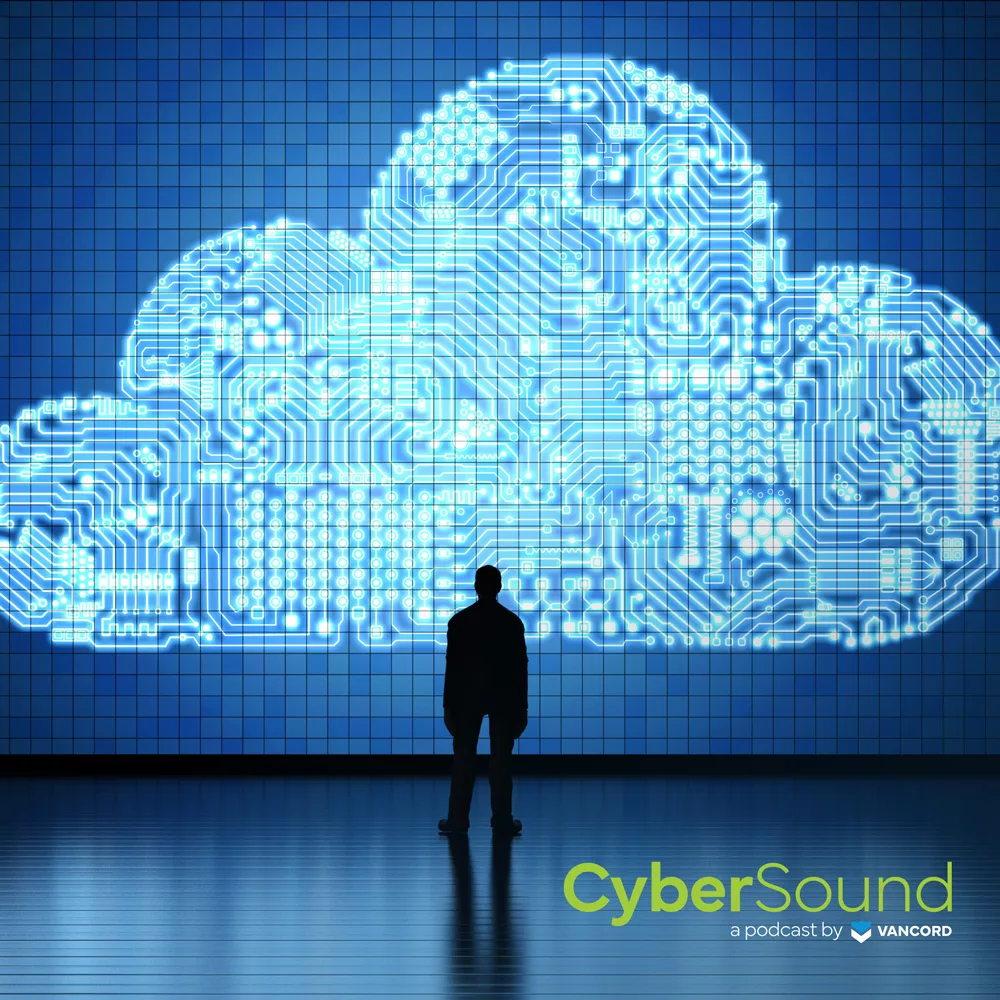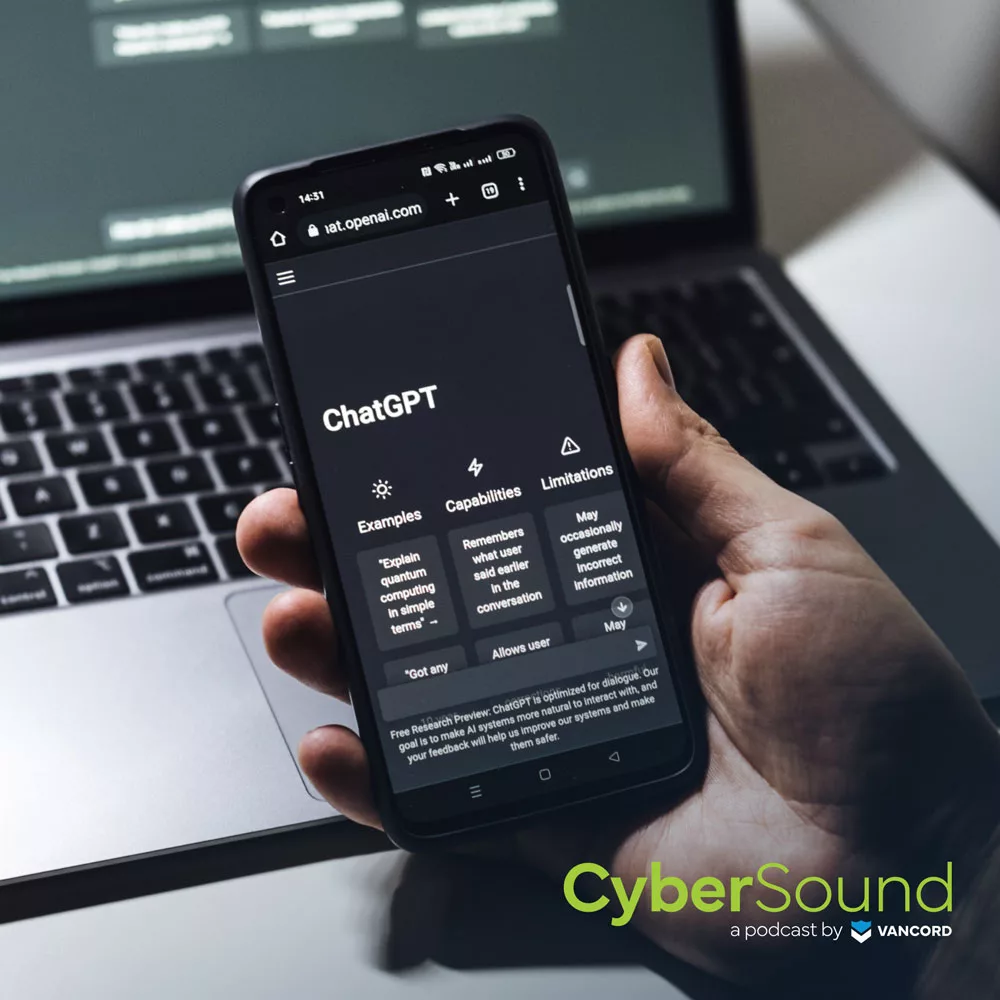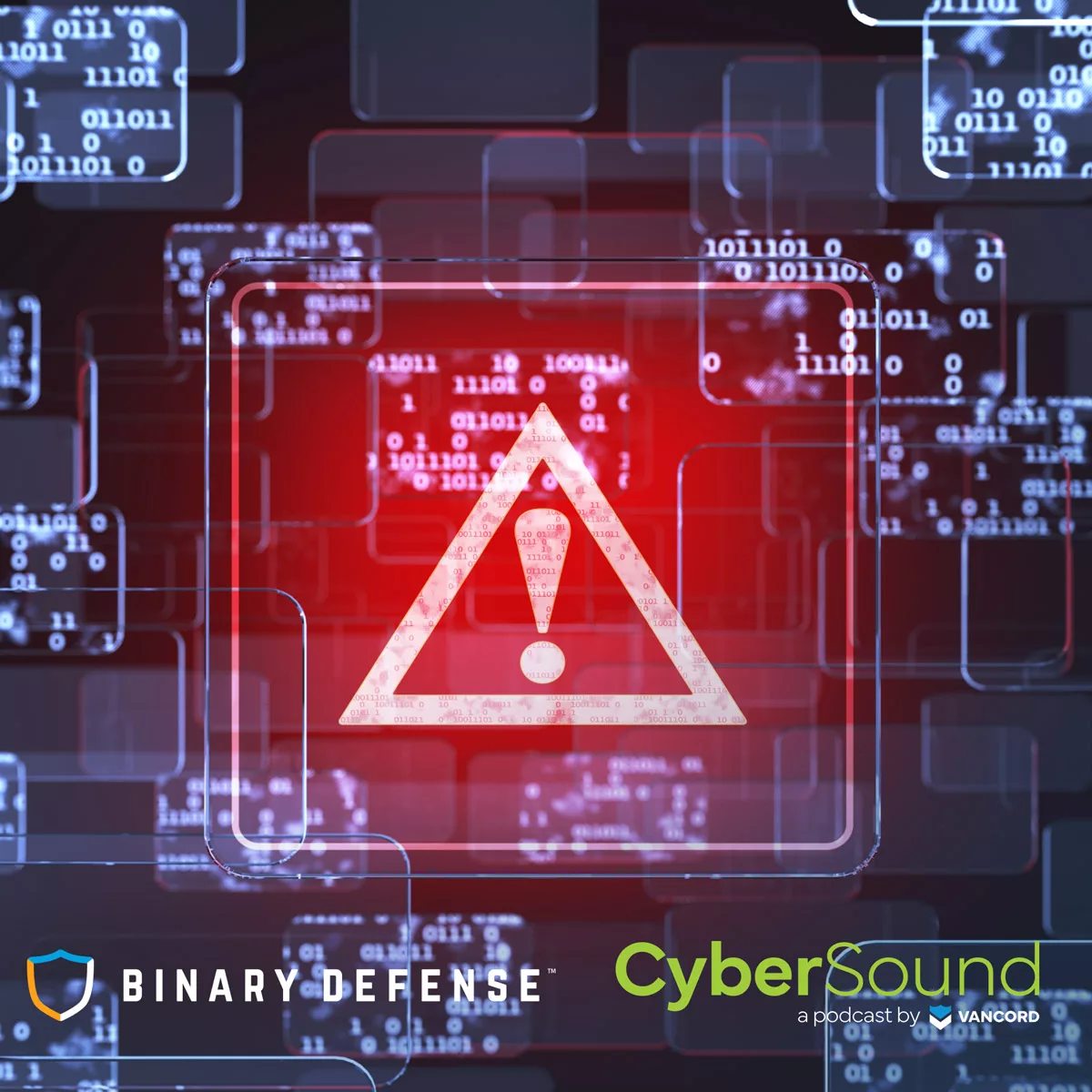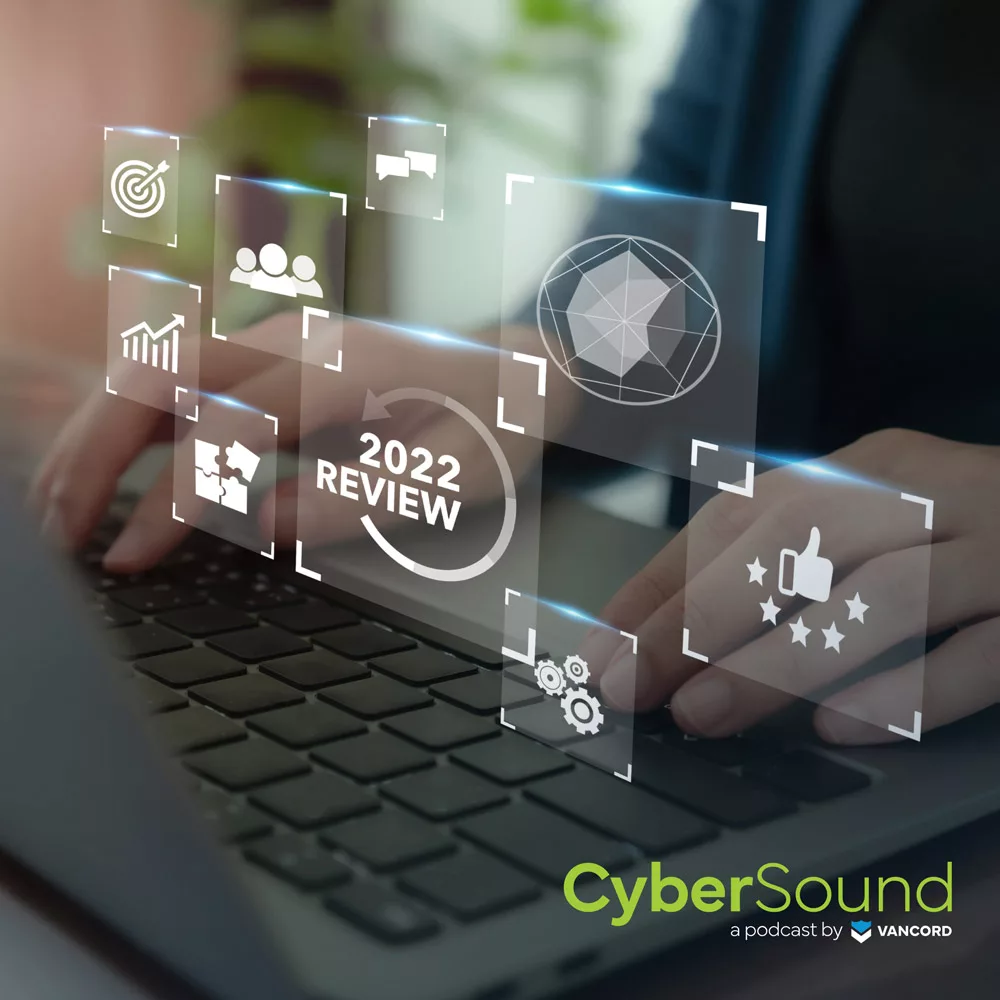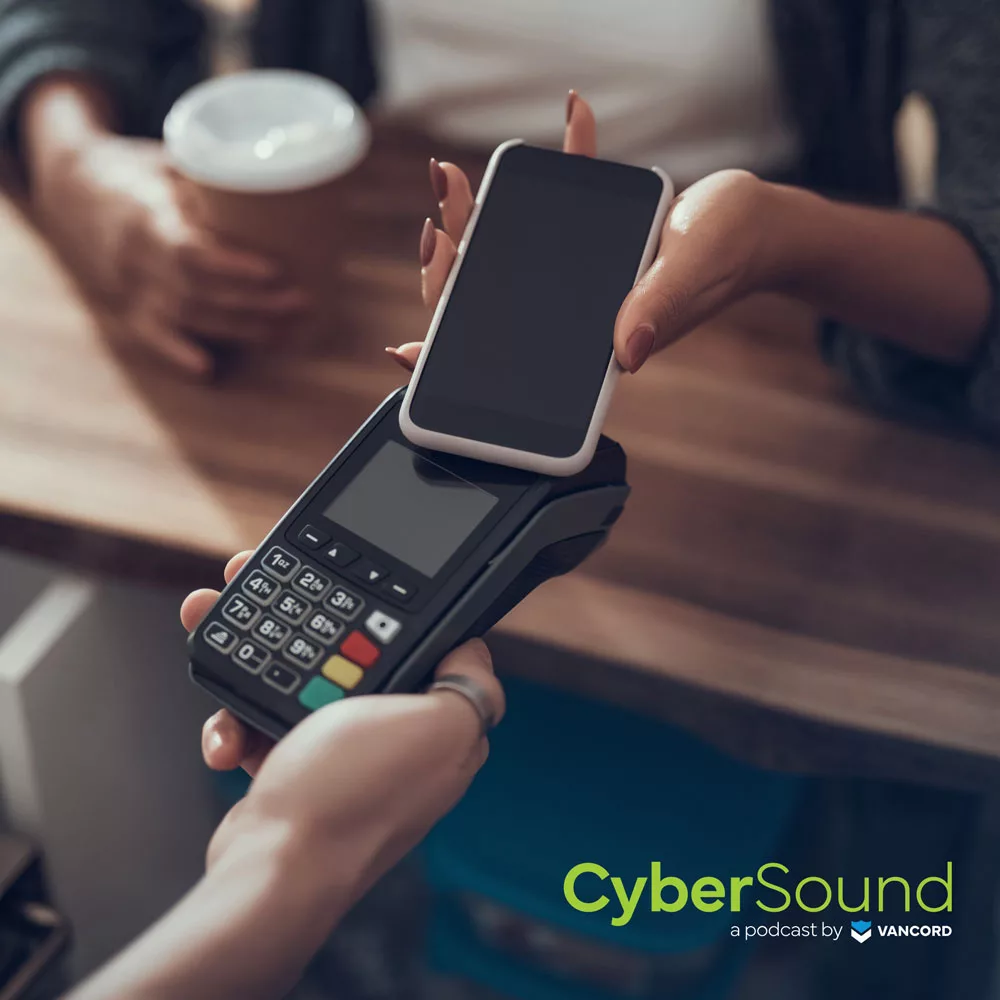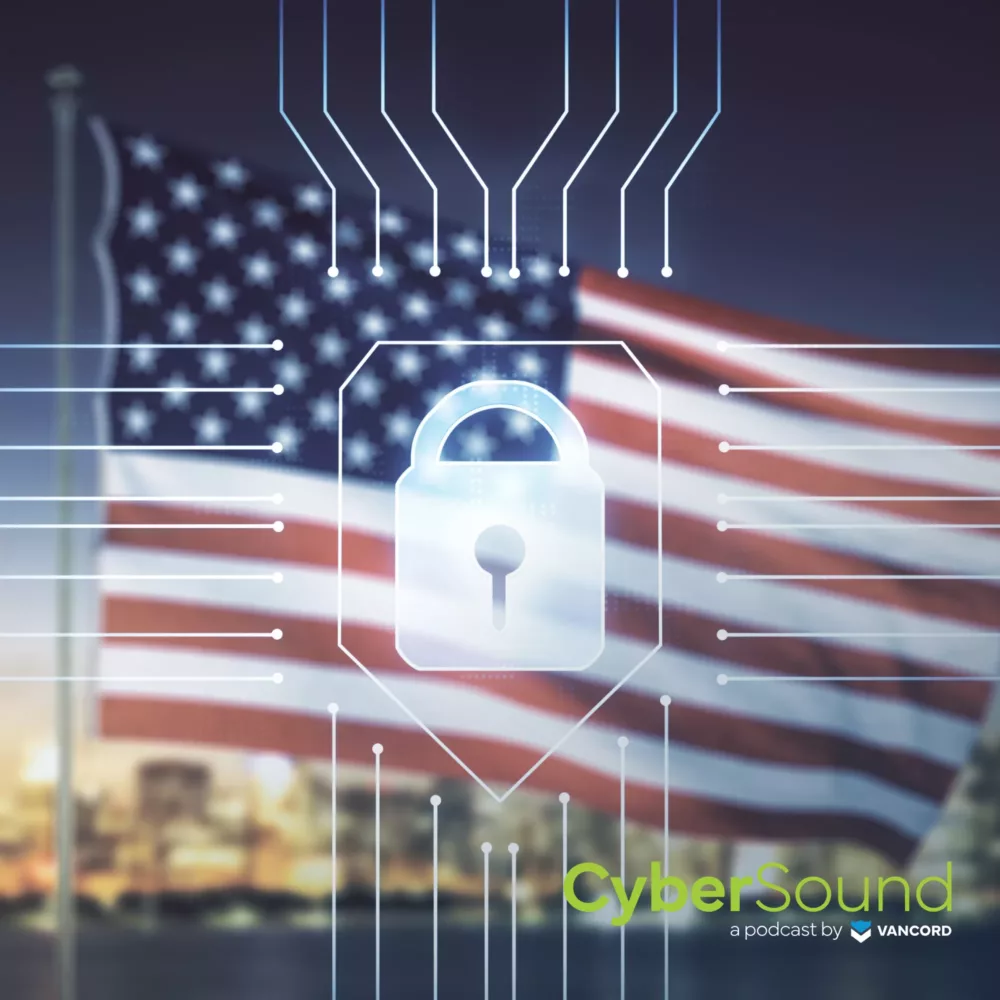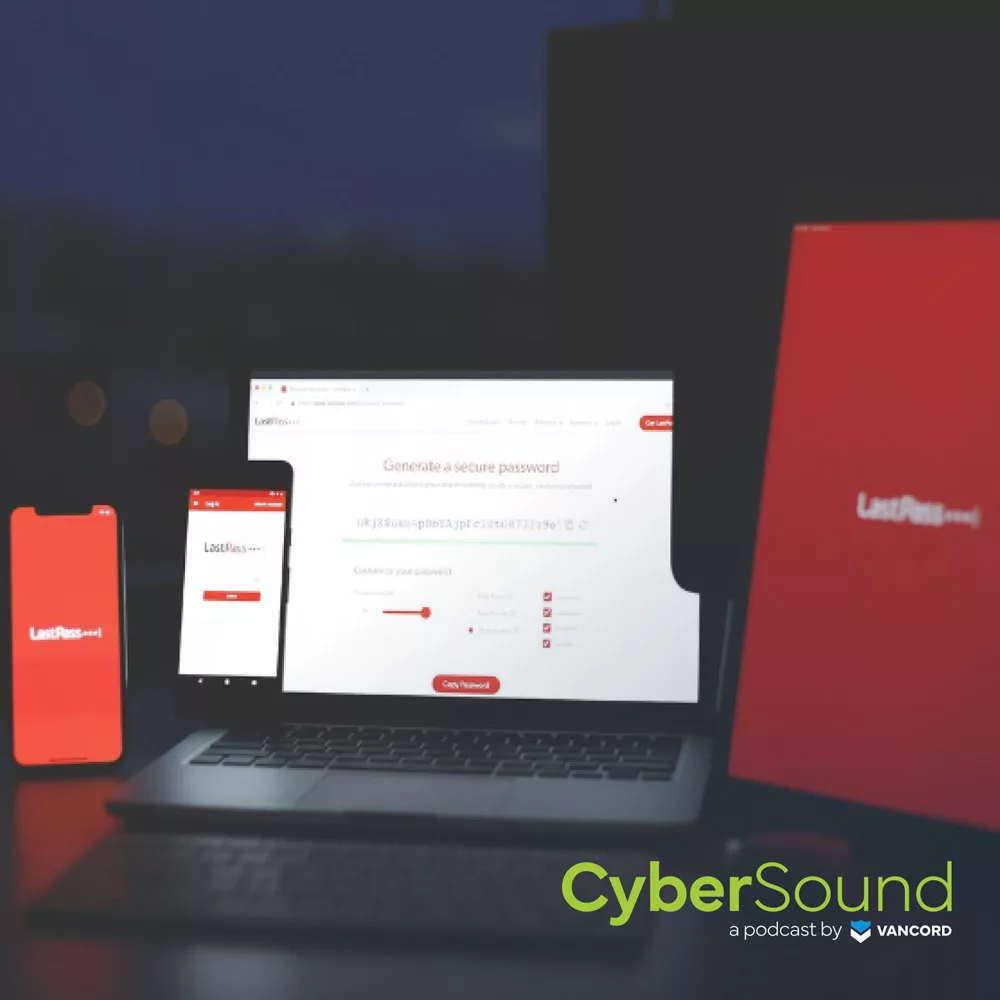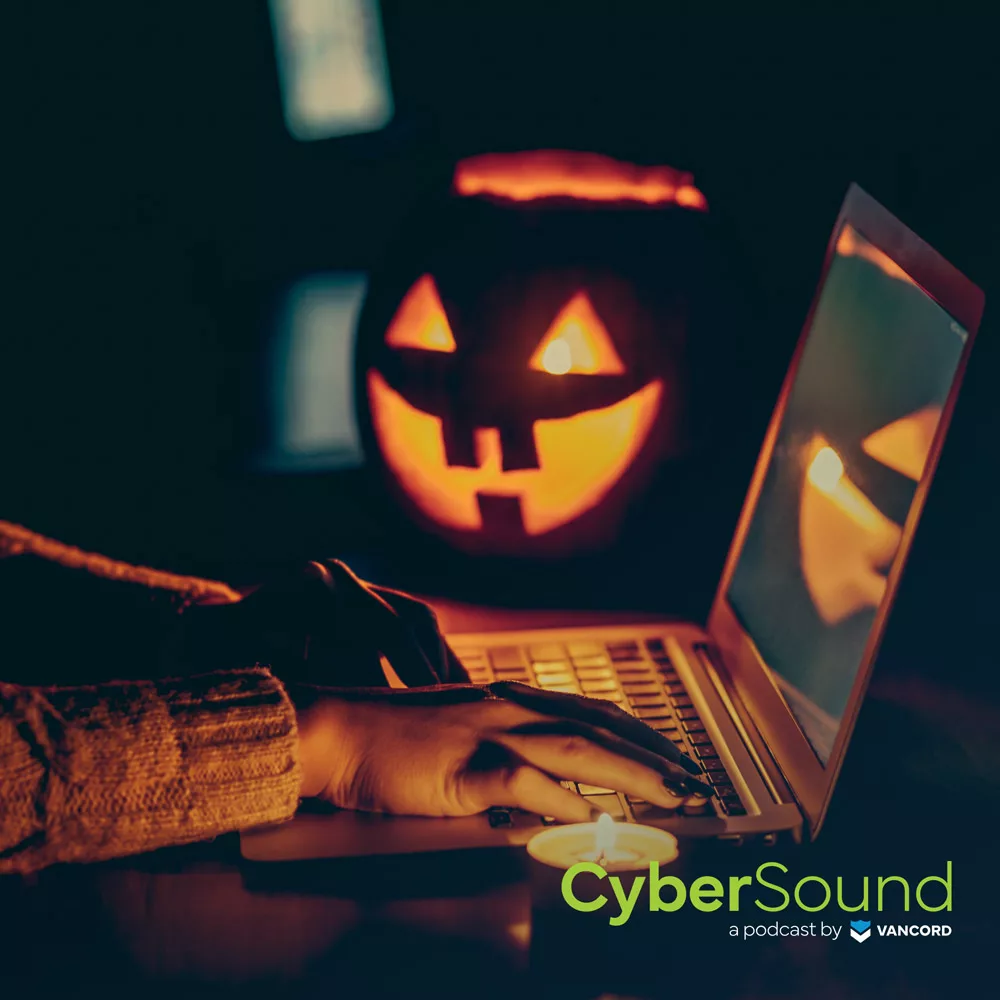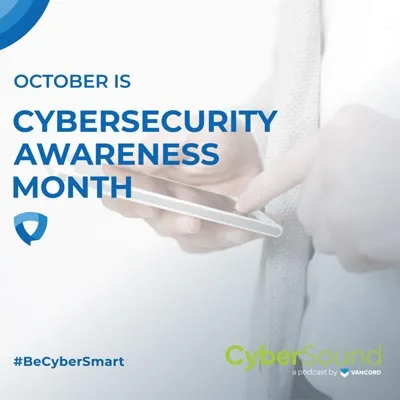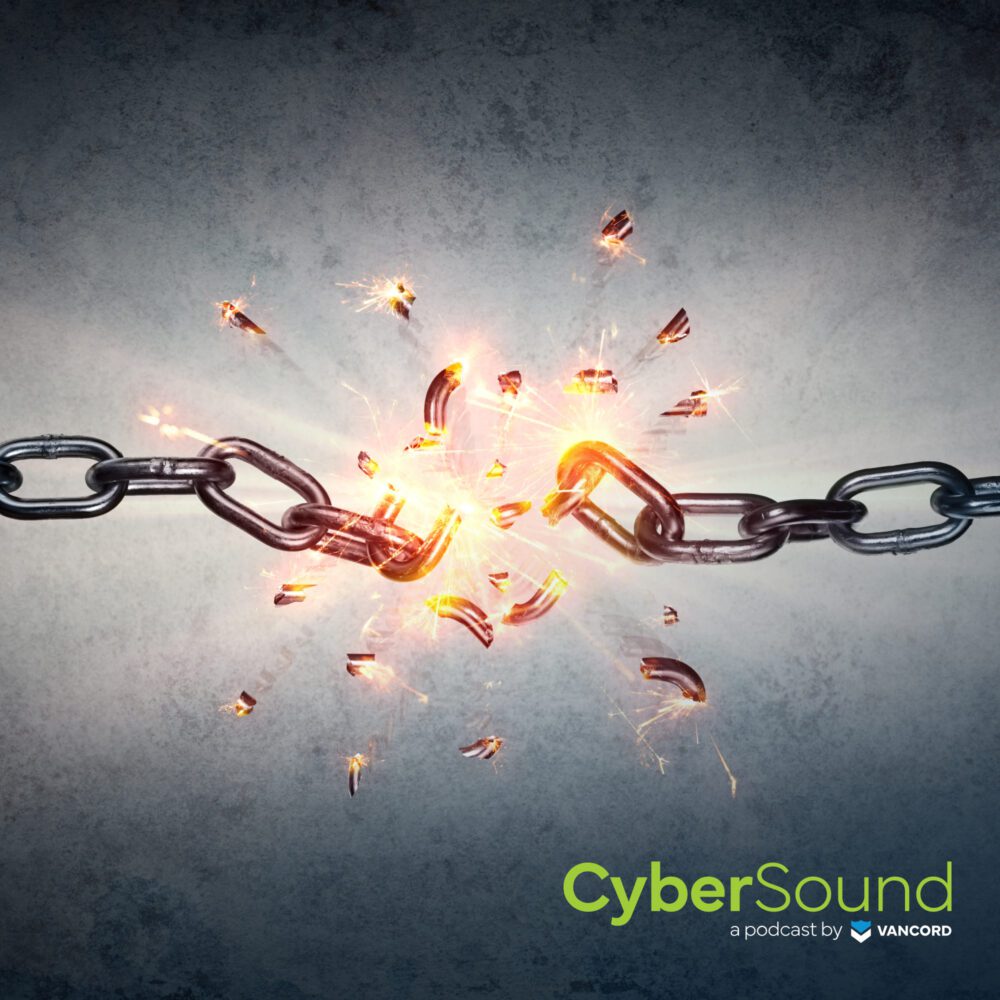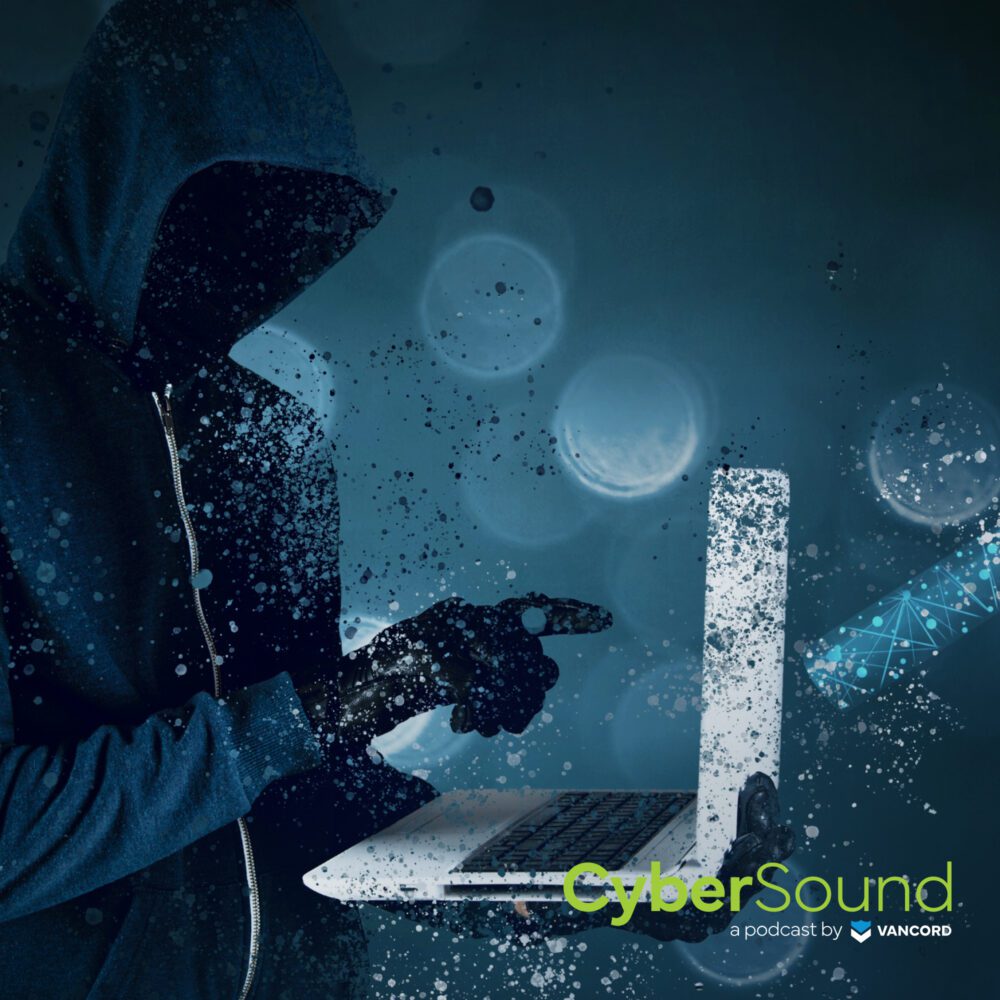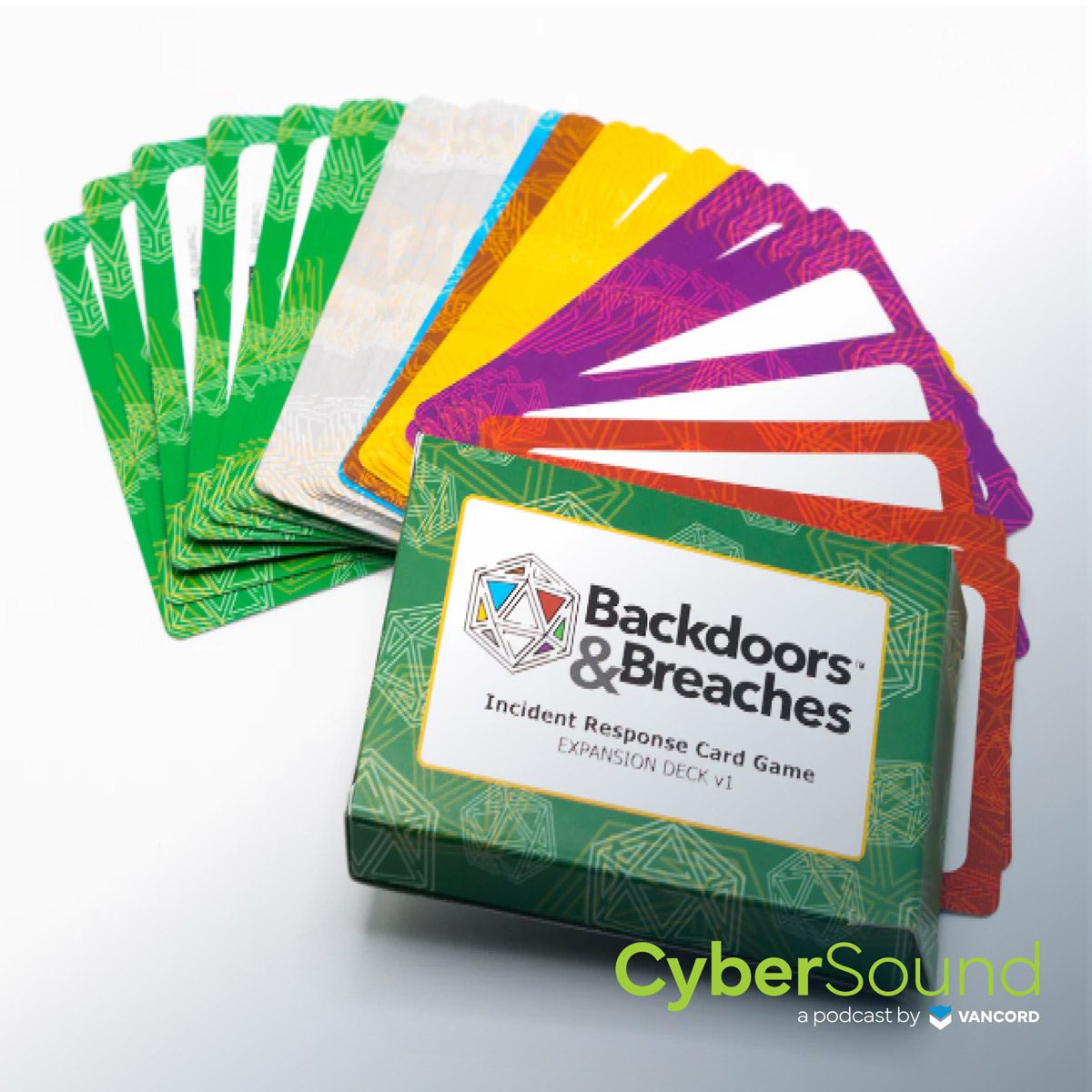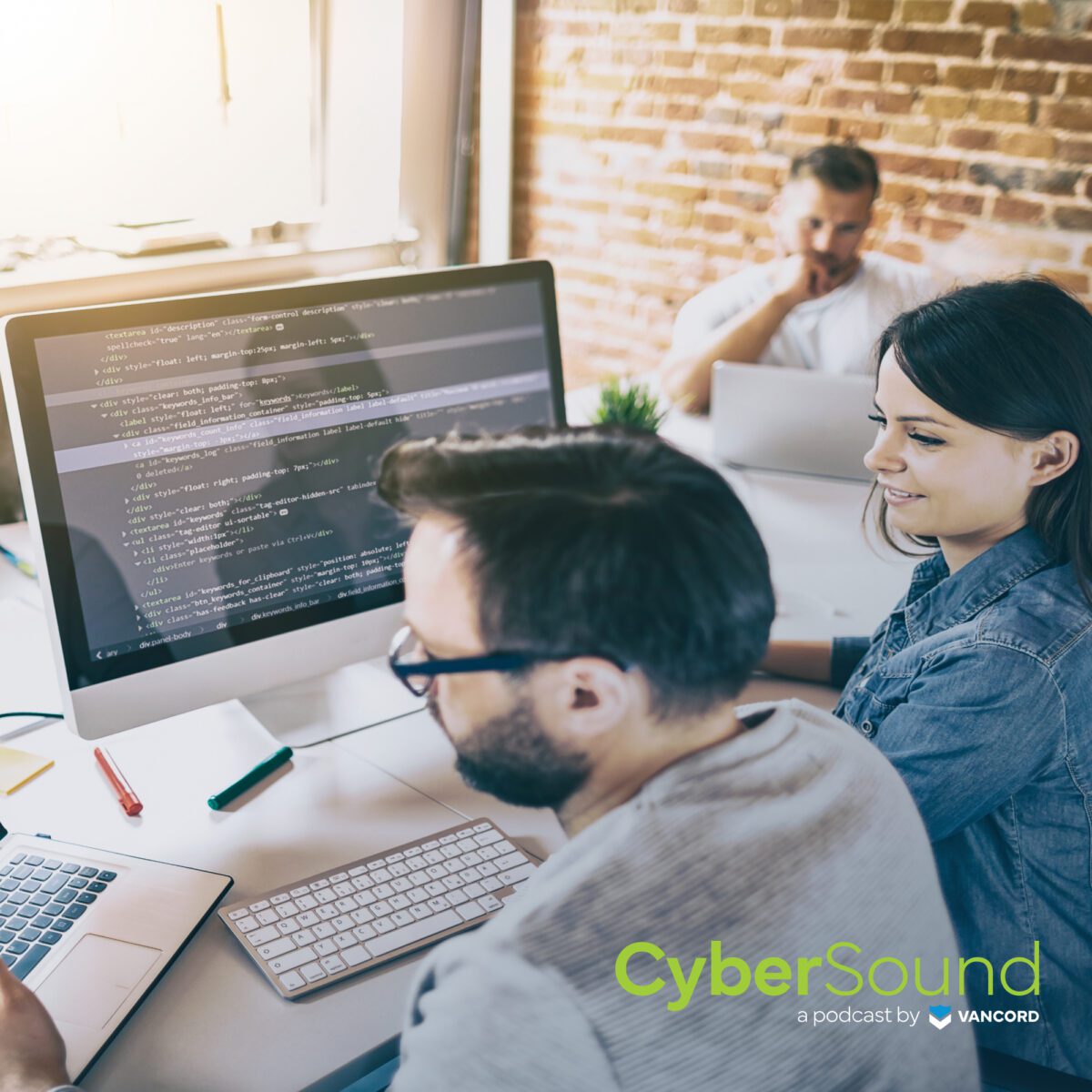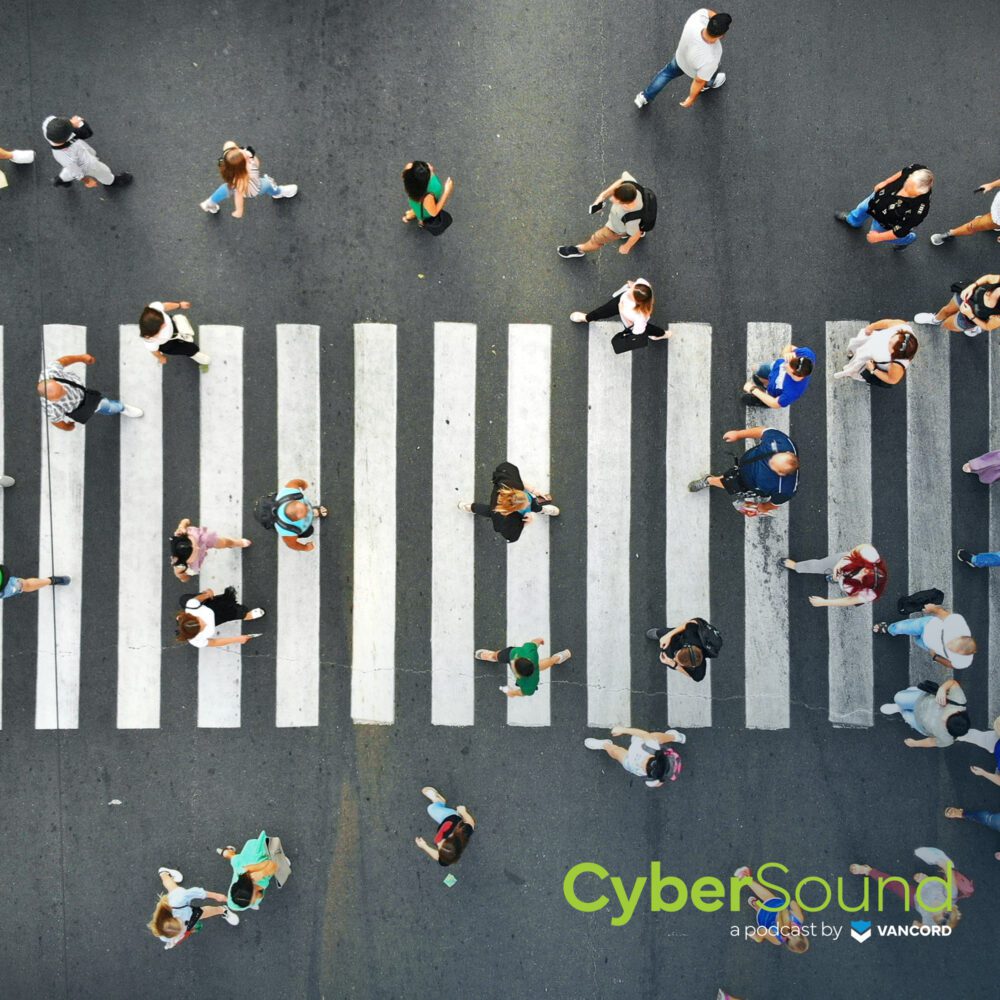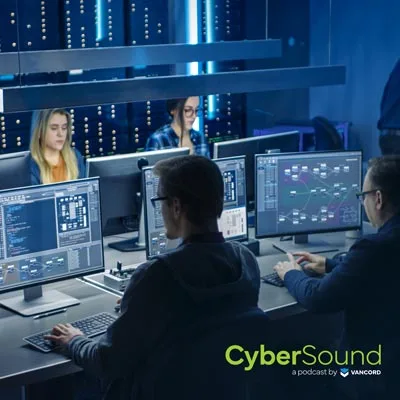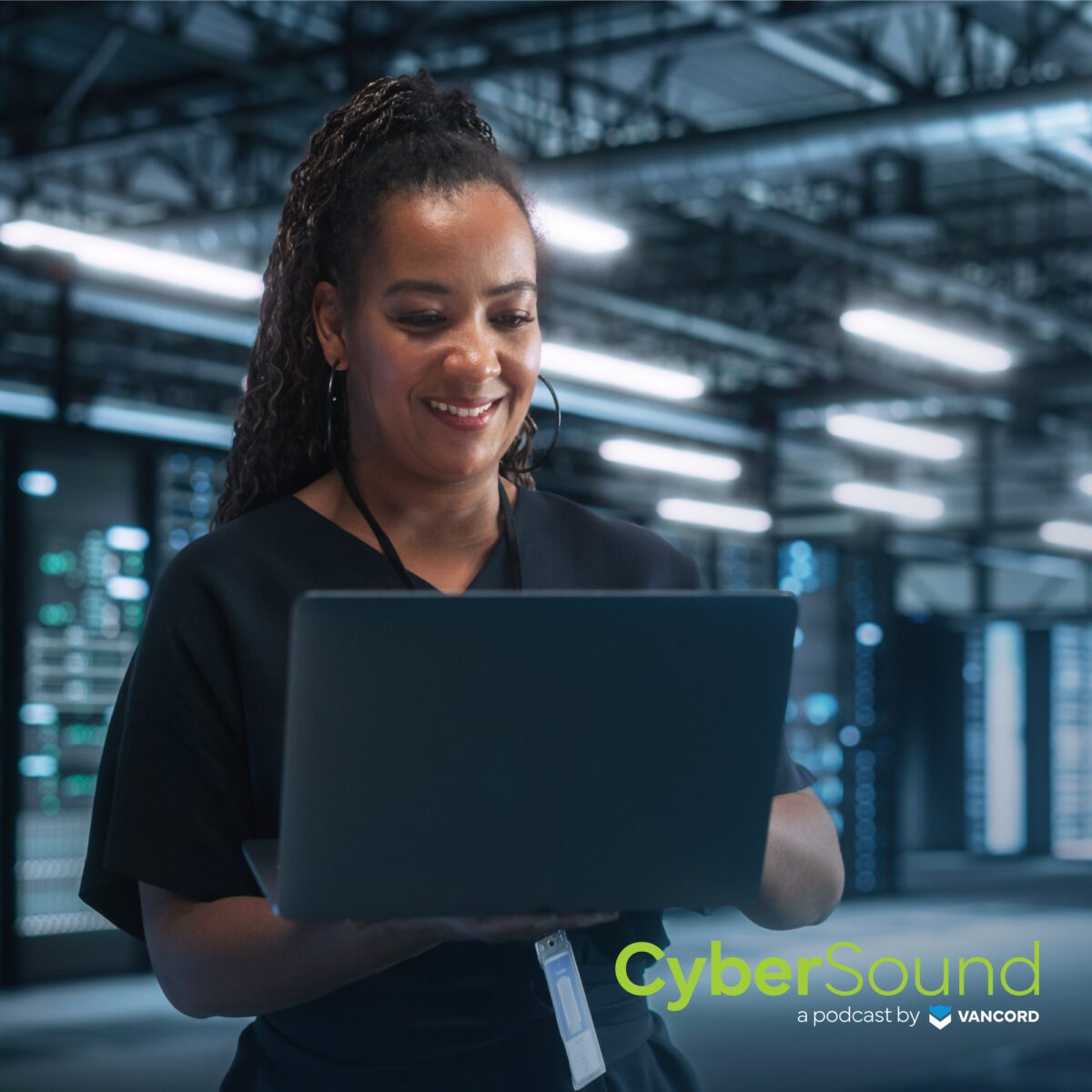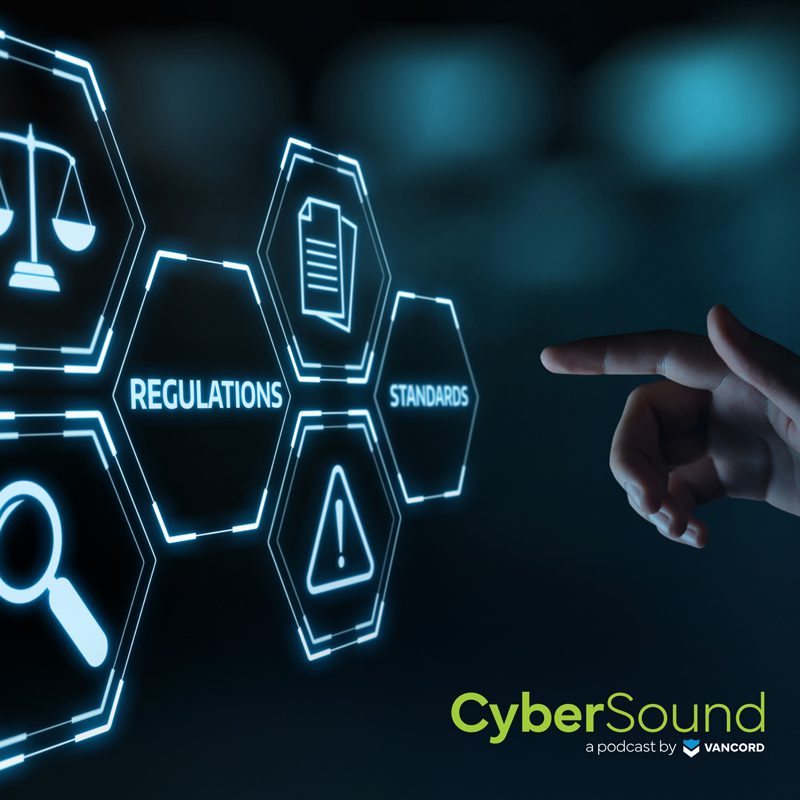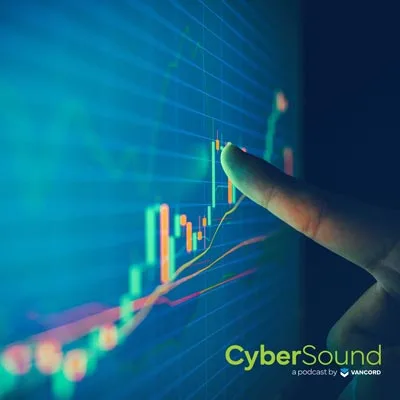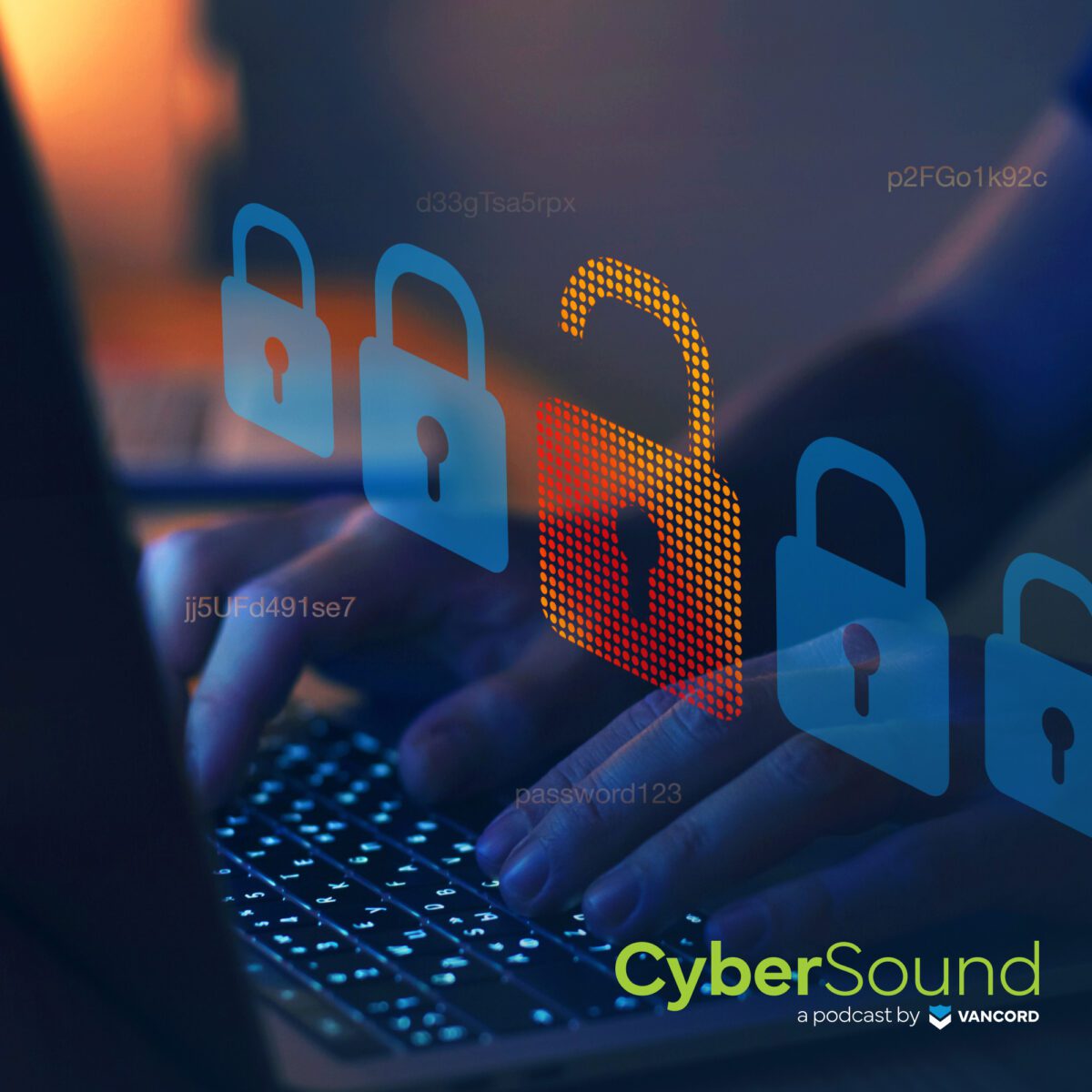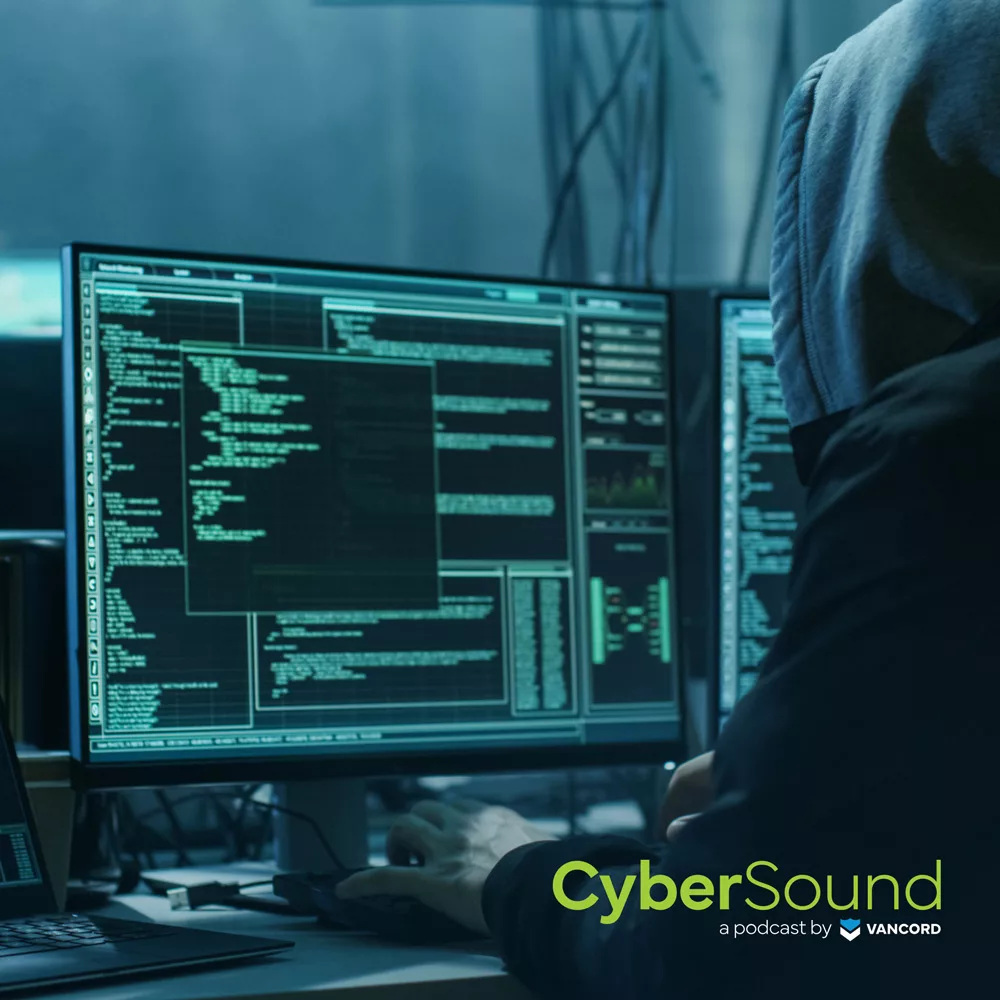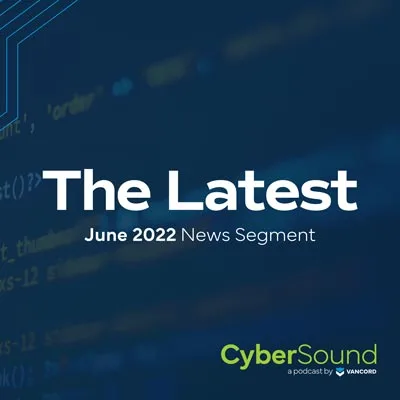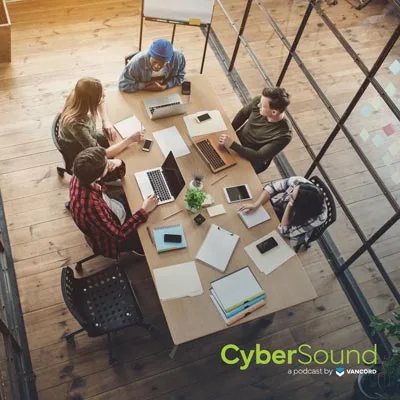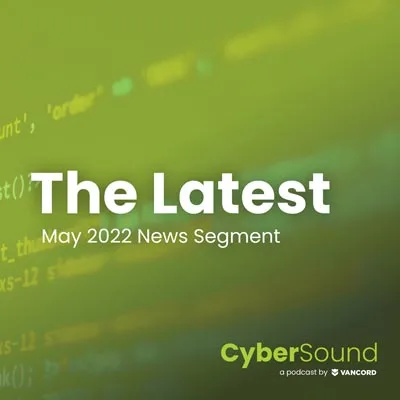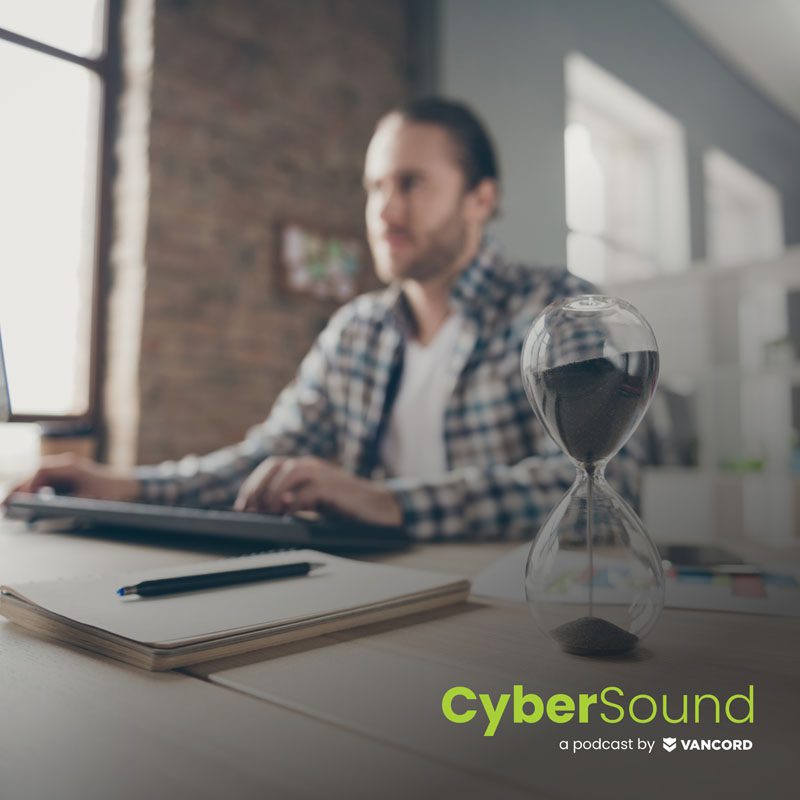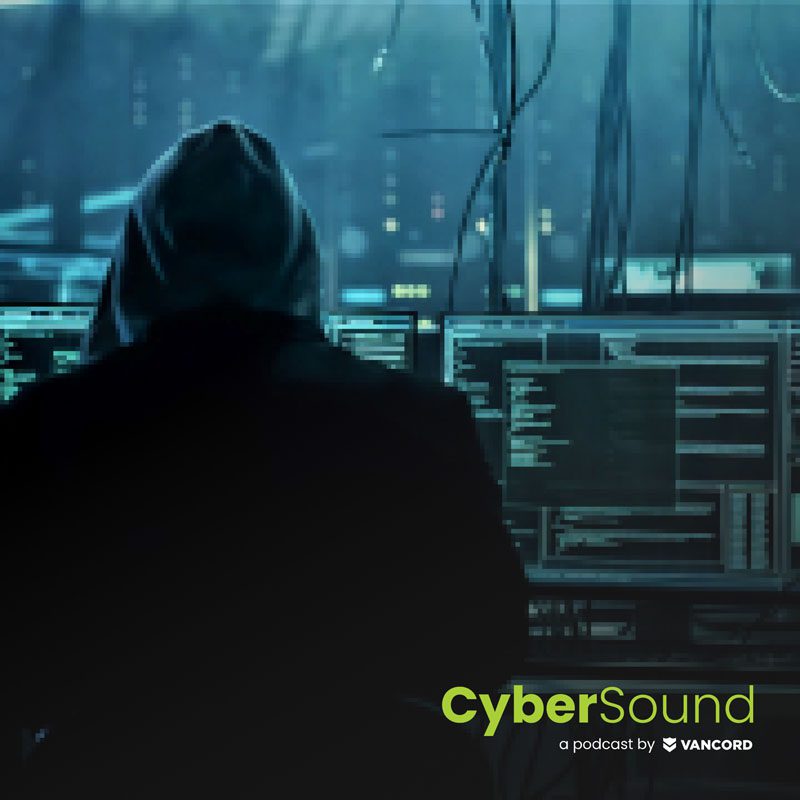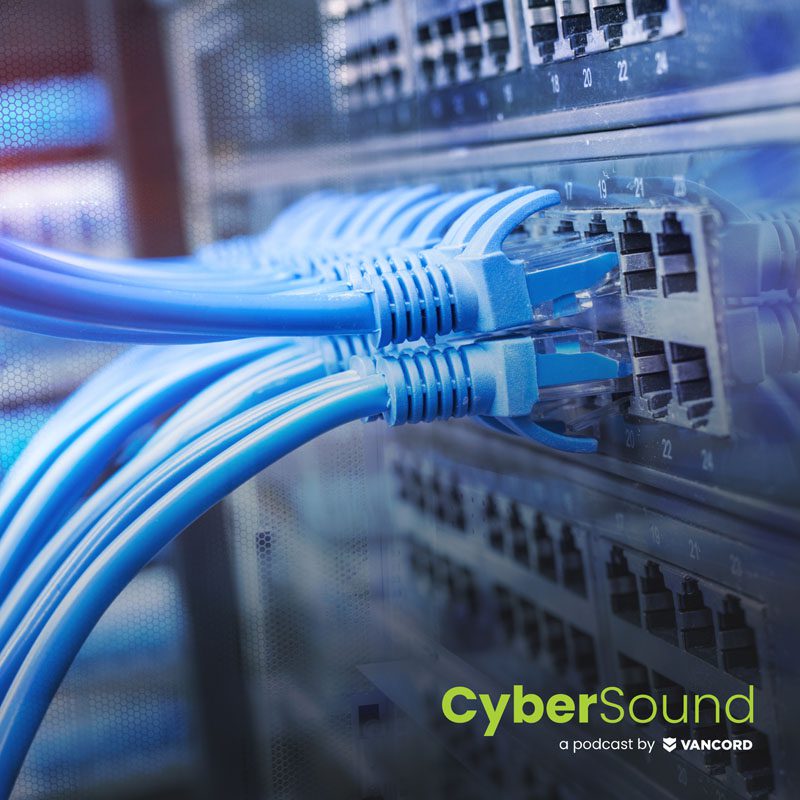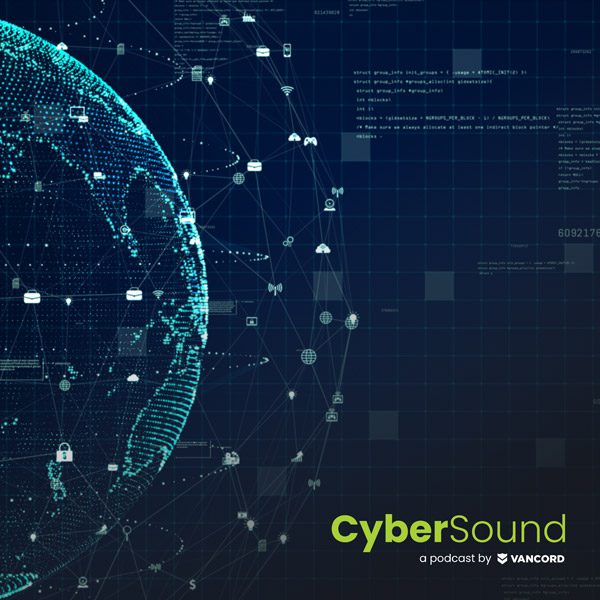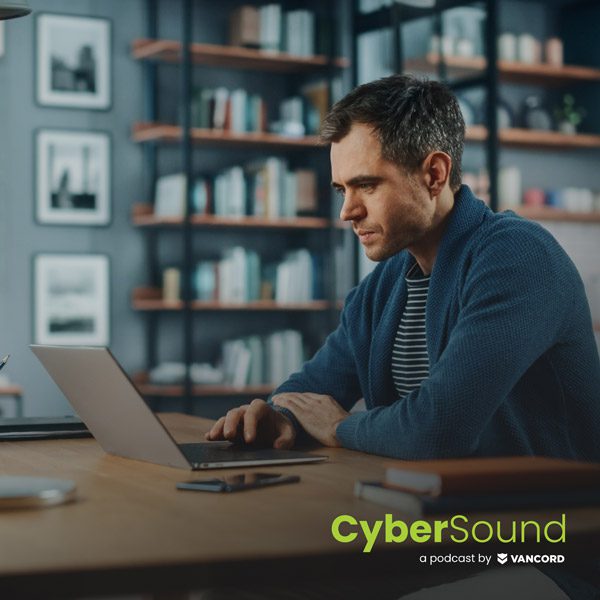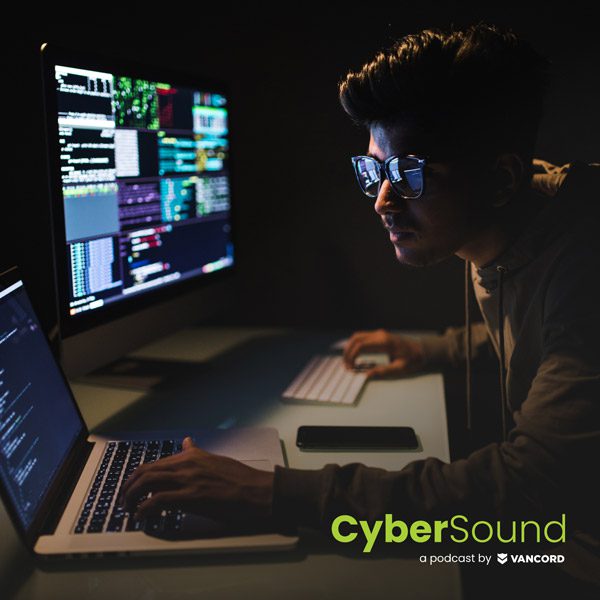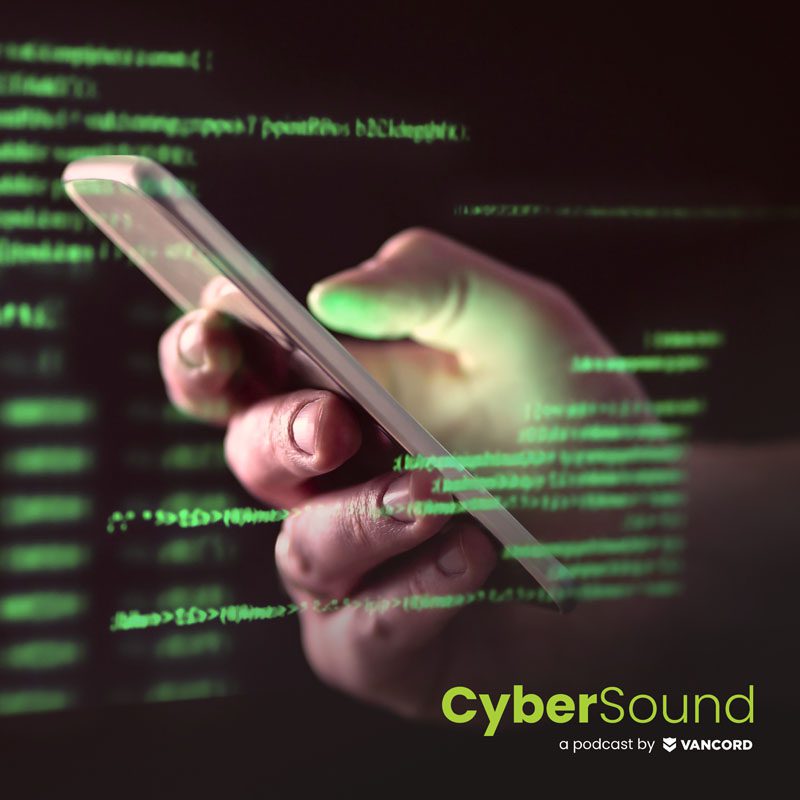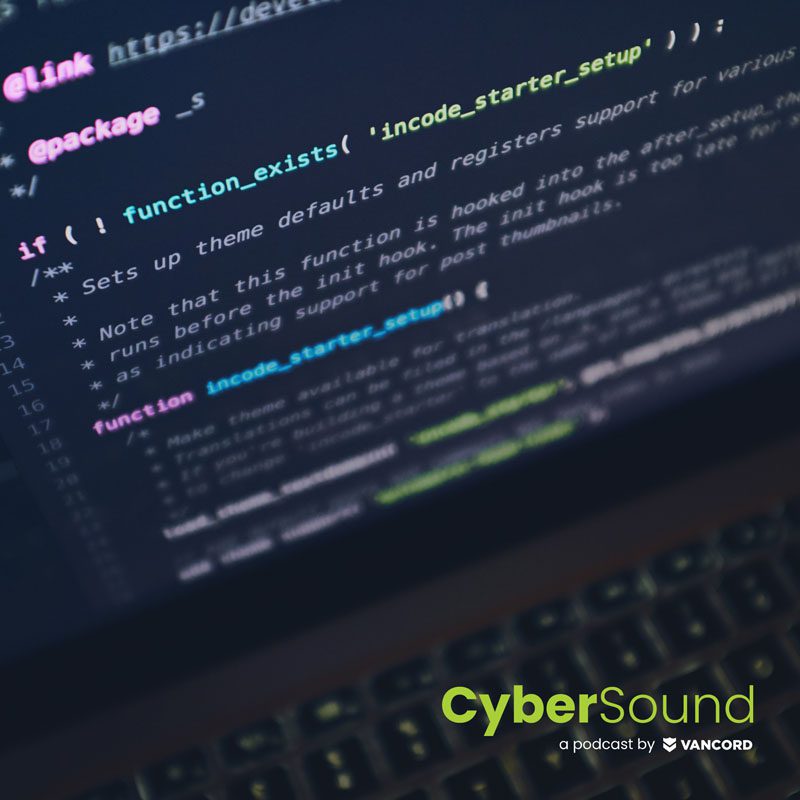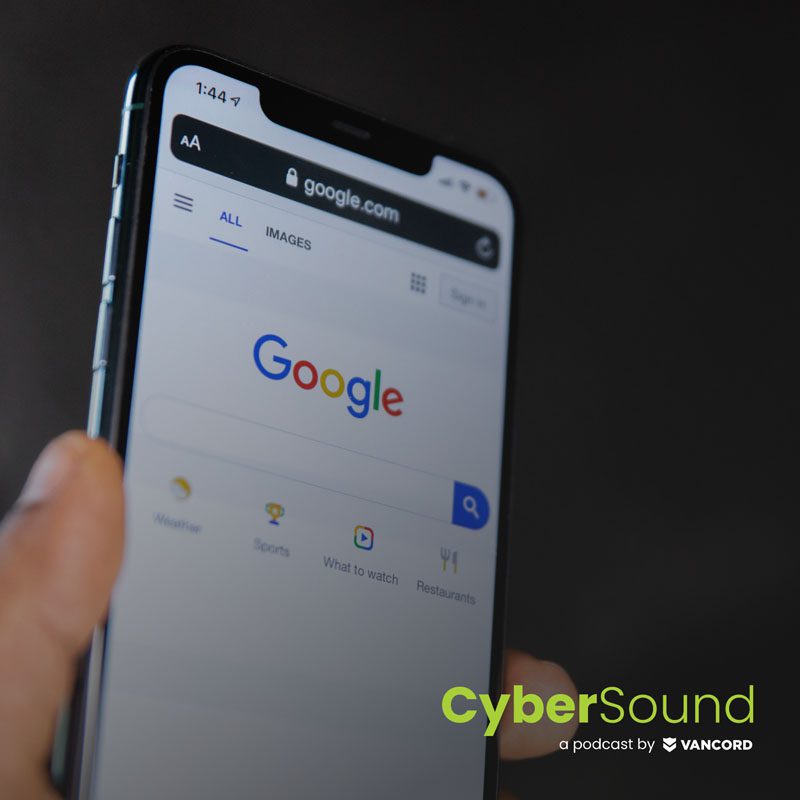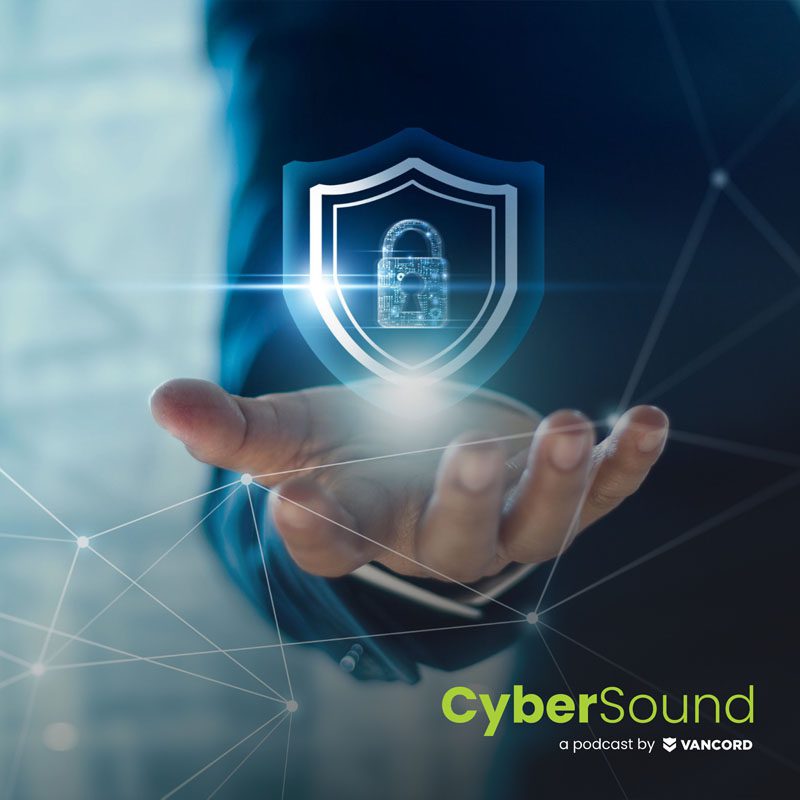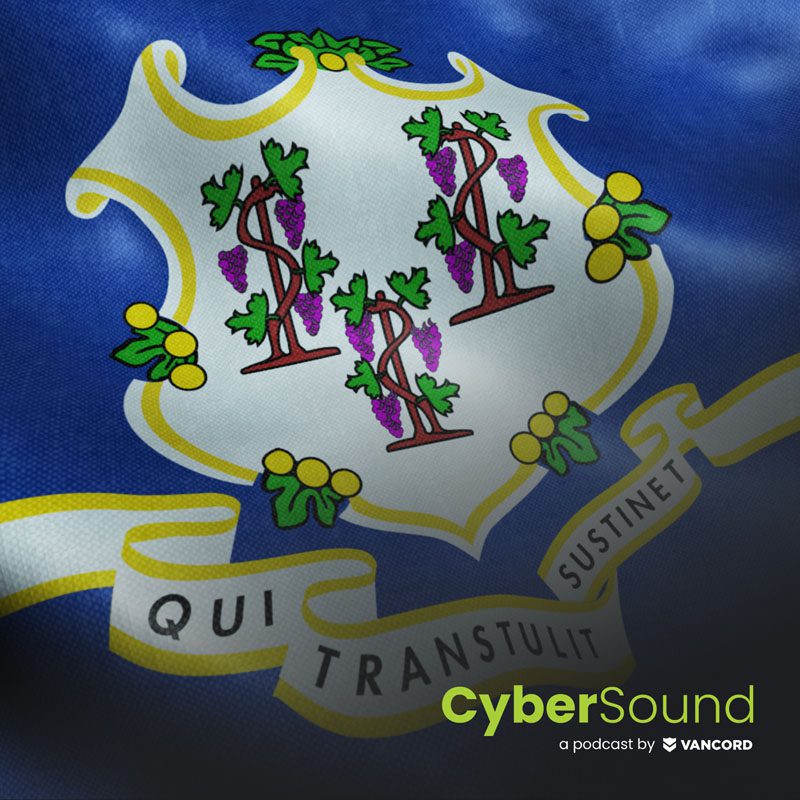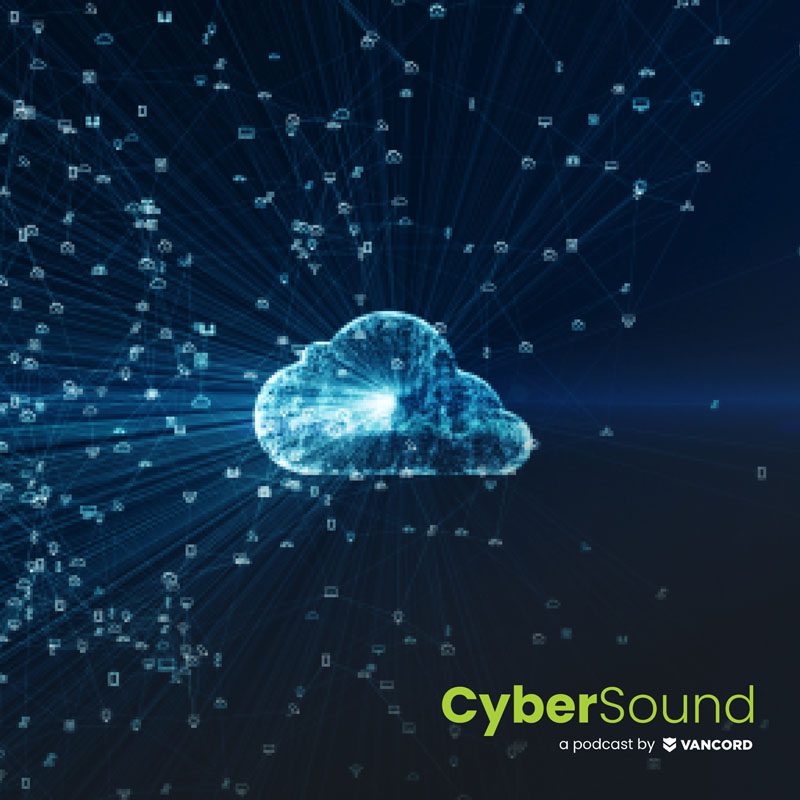00:02
This is CyberSound, your simplified and fundamentals focused source for all things cybersecurity.
Jason Pufahl 00:12
Welcome to CyberSound. I’m your host, Jason Pufahl, joined by Michael Grande and Steve Maresca today, and we’ve got Tony Nicolaidis, Chief Commercial Officer with Origin Wireless. Welcome Tony.
Tony Nicolaidis 00:25
Thanks guys, great being here. Appreciate the opportunity.
Jason Pufahl 00:28
Yeah, thanks for, thanks for reaching out. I’m looking forward to chatting about it. So it’s we usually talk things that are like purely sort of information in cybersecurity. This probably falls correct me, if I’m wrong, falls a little bit more, maybe into the physical security space. I think we’re going to chat around that today. So if you could then give us a give us a little sense of who Origin Wireless is, kind of what yourcore business model is.
Tony Nicolaidis 00:52
Absolutely, so Origin Wireless has been around since 2012 and the technology foundationally was started at the University of Maryland by Doctor Ray Liu, and from 2012 to 2019 about really foundationally, really getting the technology where it needed to be, and discovering what it can do. And then after that, you know, Spencer Made, our CEO, was on board, I came on board, and now we’re starting to commercialize. So we’re based in Rockville, Maryland, just north of Washington, DC. And basically, what is, what is Origin Wireless? We’re a team of 50, and basically the technology is, as long as Wi-Fi is in a space as we know, Wi-Fi is ubiquitous. It’s everywhere now, Elon Musk is going to give us, you know a Wi-Fi, everything, right, as long as there is a Wi-Fi signal, what our technology can do is, as bodies move through Wi-Fi, the Wi-Fi signals are disrupted like a body of water, almost, and we can quantify and contextualize that disruption, to look at things like macro motion, you know, doing jumping jacks, running all the way down to micro motion, breathing, you know, so you’re able to understand what’s going on in a space by just having Wi-Fi In that space and using our technology to understand.
Jason Pufahl 02:24
So I’m going to kick it off because I do have, I have a couple of questions probably right out of the gate, my but my first one probably is, do you consider this to be supplemental to sort of video cameras and some of the traditional physical security things that people are familiar with, replacement for, like, where do you where do you feel this fits best?
Tony Nicolaidis 02:42
Yeah, great question. So residential and small-medium business is one of our four verticals, very important, huge vertical. Our biggest investor is the largest security company in Europe, number two to ADT. And so it’s a that’s kind of a loaded question. You look at Ring, right? Jason, Ring has done an outstanding job of perimeter security right outside your door. We have cameras around your house, but when you get inside the house, okay, that’s where indoor cameras are becoming less and less wanted by customers. We think two out of 10 and shrinking, hacks and so forth that happen. That’s where we fit in. So we are, we complete the puzzle of physical security, Jason, we complete the puzzle of having perimeter outside with cameras and then us inside to make sure verify human presence with no wearables needed, no cameras needed so forth, okay? Support replacement inside, and that’s where we can kind of make sure that, like, again, the puzzle is complete, right?
Steven Maresca 03:50
So are you using cameras inside in any capacity, like targeting, selective monitoring while they’re off all the time, unless movement is detected in a hot area or something like that?
04:01
No, we use no cameras. It’s strictly the Wi-Fi signals that Verizon, Comcast, whoever you have in the house. It’s just purely the Wi-Fi signal. It’s all we need.
Michael Grande 04:12
So one of the questions I had is, is relating to sort of the variety? Let’s just take small business and residential use cases. You’ve got such a wide variety of vendors in that space, you talked about, ISPs, that will give you a cable box that will also deploy wireless, you’ve got home networks. Are there any restrictions on the type of infrastructure that Origin needs to run? Where does it sit? Is it sit sort of on an application layer, somewhere in the wireless controller?
04:42
So depending on the use case, we have a multiple we have four different general topologies, but ISP is another one of our four verticals, right? So we sit in the Wi-Fi chip, in the router, or in the in the security hub. We sit as a firmware in the Wi-Fi chip. So whoever the Wi-Fi chip is, we set a firmware on top of.
Steven Maresca 05:03
If you’re not in that particular case, are you deploying sensors physically spread throughout a space just to be able to listen and observe interference patterns and things of that variety?
05:13
So let’s talk about the ISP use case. You have a router. Our technology is on there. I live in North in the Northeast here. So I’ve got FIOS. Verizon was our first customer, and so the router has to call home awareness is the product, and that router will create, will ping all the connected devices around the house and create these sensing zones. Okay, so and those, those, those connected devices do not need our heck on them, it’s just a router that creates the sensing zones. And that’s the way you under and once a some of somebody enters that sensing zone, we know that there’s somebody there. So no other sensors needed, none.
Jason Pufahl 05:53
So you’re really then what we’re looking for as a consumer, potentially, is a an origin aware, or, I think you just referred to it as, as home awareness is that what you said?
06:05
That’s particularly Verizon’s product. They call it the FiOS, um, Verizon origin product, and in their routers.
Jason Pufahl 06:12
Gotcha, okay.
Steven Maresca 06:14
What are the applications for it? Just, you know, to give a sense of what that looks like,
Tony Nicolaidis 06:17
Okay, so let’s talk about that. It’s great. We’ll talk about the four verticals, if it’s okay, let’s talk about the ISP vertical, the ISP vertical, right now, we’ve launched Verizon. We’re launching Telecom in Europe, right? We’re in the process of and then Telecom, as we know, owns T-Mobile, that’ll come in after that. So what are they doing in general? They are going for a product that just like Verizon right now, if you get home awareness, you have this blue orb that you can see that they’ve done a lot of research on their app, and as the blue orb shrinks or gets nothing, there’s nothing going on in your house. As the blue orb grows, you know, there’s a lot more activity in your house. So right now, it’s just a matter of a visualization of the activity in your house. Why do they like that? They can start to talk to talk to their customers about, hey, are your kids supposed to be home or not? Are there supposed to be activity during your and during this time in your house? You can check that with that, where the ISPs want to go is more into that security realm, right into that residential security. Why would they want to do that first? We know Comcast and XFINITY do that already. But these ISPs want to become more relevant to their customers outside of just Wi-Fi, which is now becoming much more pressurized, as we know, and you know, it’s kind of a race to the bottom. You know what I mean? That it’s not just about speeds and fees. They want to be about something else, to become stickier to their customers. So eventually, they’re all going to get to that place is more residential security, okay? So that’s the ISP space, the actual security space. Like, let’s say we’re launching right now with Vera shore in Europe. We’re launching with Alarm.com in the US. We are supplementing their system, for example, in what’s called a CU the central unit unit, in very short, we’re there in their Wi-Fi chip. So when a sensor is broken, a door sensor or window sensor, or even their camera, for example, we were just talking about, notices somebody, we wake up, verify human presence, right and then shut back down. And so we’re kind of complimenting them. Why? In Europe and it’s coming to the US, there’s heavy fines if police are called to your house and it’s a false alarm. By the way, in the US, Pittsburgh, Las Vegas, Milwaukee, are no longer responding to alarms because of the false alarm rate. Right? Because today, when you call ADT and you’re we’re doing this podcast, and your phone rings and they say that he’s saying, hey, there’s we sense a break in in your house. Do you want us to send the police? You’re not home. What do you know whether it’s there or not? They have no idea about verified human presence. That’s what we supply, is elimination of false alarms and verified human presence. Let me stop there with the first two critical ones. We’ll talk about the other two in a second. Other two in a second. But let me stop there for the use cases that you were asking about, for questions.
Steven Maresca 09:07
Sure. I mean, I see immediate applications beyond what you articulated in terms of just the pulsing blue sphere, right? There are lots of folks who care about home automation and wiring up with thermostats and other elements, lights and things like that. Are there other trajectories beyond that have been considered in that regard?
09:25
Yes, so lets talk about the third there’s four, I said, the third vertical, which we call smart spaces or IoT. So we are working with the largest HVAC manufacturer in the world. I’m not going to name their name for smart thermostats. Again, I’m got an, I don’t know if you guys do or not, but my it could be, has these PIR sensors, these dumb sensors that you got to put around house. Well, those PIRS, if you’ve been in an office that has a PIR, sometimes you got to do this, because it loses you. We won’t lose you right again. We can see you just doing the remote in the house. We can see you falling asleep in the house, and we’ll know you don’t need all those extra sensors. Overall, as long as you have our sensor in smart thermostats, we’ve also launched already. And for legal reasons, I can’t tell you their name, but they are the largest bulb manufacturer in the world, and you can go buy them anywhere. And so you get two bulbs, you put them in a room of two lamps, and it creates its own sensing zone. You don’t need a you don’t need a router or anything. And once somebody steps into that zone, within a half a second, we turn on the lights, and then you can send what to turn the lights off. Okay, and there are many more kitchen appliances. There are many more use cases that we are looking at in the smartspace area. So that’s the third. And the fourth we’re not really attacking just yet is health tech, elderly monitoring, fall detection. That’s something we’re looking at in the future, because that does require some more sensors that the other three verticals do not, the other three verticals do not require any sensors. Okay, there you go. So there are other trajectories to answer your question.
Steven Maresca 11:03
Sure, and there’s overlap, clearly between all of those. Oh, yeah, absolutely. So the last item, just real quick, the additional sensors you were alluding to, breathe, breath sensing and things of that bright I imagine you need higher fidelity for that type of thing, and that’s what you mean with the health space.
Tony Nicolaidis 11:20
That’s right, you’re gonna need what we call higher frequency pinging between the Wi Fi chip and that sensor to make sure that we’re getting at the highest fidelity possible. So when you get in that space, you better be, better be right. So we are, we are getting into that space. We can demo fault detection. We’ve demoed it now for two years, but to commercialize it. It’s a different story. So elderly monitoring something we’re very serious about, we’ll get into here, and over the next 12 months,
Michael Grande 11:48
Something came to mind as you were going through all those use cases. But you know, I think you, you probably have successfully navigated it, which I don’t know that there’s any consent issues that you have to sort of navigate properly when you’re you’re talking about some of this, you know, based on specific information or private information or presence, or anything like that?
Jason Pufahl 12:09
I mean, privacy obviously is getting to be a much more serious topic, even here locally, right? So how do you navigate that? What are the concerns?
Tony Nicolaidis 12:18
All I can say is, we’ve already passed four, four letters, GDPR in Europe. So if you could pass that, you can do anything, right? So, but to answer your question, in all seriousness, we don’t identify anybody, right? All we know is there’s activity in the space. All we know is there’s verified human presence in the space. We don’t identify anyone that’s number one and B, I mean, we’re talking about cybersecurity, all of our processing, all our all of our processes done on the edge. We have no cloud component in the Origin infrastructure. It’s all done on the edge. So the data is pretty private, but even that data is vanilla data, we just know there’s verified human presence, sure.
Jason Pufahl 13:01
So I’ll admit, I walked into this thinking a little bit more about sort of traditional physical security than some of the applications that you talked about. I’m personally really interested in the how do you use technology to provide assistive services to people? The idea of you getting into that sort of medical space to be able to do some detections for, you know, elderly folks at risk is hugely important, right? I think there’s so much resistance from a lot of people to wearing devices or to have to feel like they’re being monitored by something that’s on their person, and if you can provide some of that in a way that feels less intrusive. I mean, that’s a fascinating use case, and one that that I’ll pay a lot of attention to, I’m actually, I’m really intrigued by that.
Tony Nicolaidis 13:46
Jason, I mean, it’s some look. Are the elderly in the world today want to age independently. My parents live with, so does my mother in law, right? So they want to be able to do their thing. So you’re going to need technology like this in the future, where you don’t have to charge a wearable wear or wear a wearable like you’re saying to do that. So we think our technology fits perfectly. But again, to commercialize that is a different story, and we want to make sure we do it correctly and right. And that’s it’s happening over time. So that’s why we’re focused on ISPs. It’s immediate. We’re focused on residential security, small-medium business and that smart space, because, again, we’re as we’re getting best. We’re becoming going smart up to start up, to scale up. Now we’re going to need the revenue to keep the business.
Steven Maresca 14:31
Yeah. So I share Jason’s interest in those peripheral, non Information Security fields, but I do have another question about physical security. One of the biggest issues with Wi-Fi, of course, is the plead through effects, through building perimeters that I imagine could be perceived as a benefit to you, through wall sensing and things of that variety. Are you doing any of that?
Tony Nicolaidis 14:57
Yeah I mean, right now, it’ll go through if I’m hearing your question. Right? It’ll go through walls. It’ll stay in the house because you’re pinging those devices that are in the house. It won’t go out of the house, you know what I mean? So you’re not gonna have false alarms that way. And so it stays in the house and through walls, and it gives you whole home coverage. For you to get whole home coverage. Think about that. Let’s think of the camera use case. How many cameras do you need? My god, too many. No one’s going to do that. No, no one does if, if you want to put sensors on every one in PIRS, it’s it’s just not something that you do. So this allows you to get whole home coverage. Or, okay, maybe it’s not every single part of the home, but it’s fine, much greater than what you have today and through walls and everywhere else to get to what you need. I hope that answered your question.
Steven Maresca 15:46
It does. And also thinking about the PIR sensors, I mean, they’re attacked and defeated regularly in the SMB space and physical penetration tests and criminal penetration of a building, you know, you all you need is a can of air to really trick them sometimes. So there’s a huge benefit to not be, I don’t know, handicapped by that particular technology deficiency. I really think there’s some interesting things there, really to augment traditional security as well, just from door, perimeter entry security.
Tony Nicolaidis 16:17
And people don’t think about residential, small=medium, business, especially residential it is, you know, in the US alone, last year was $17 billion same massive market you put the rest of the globe. As we go over the next couple years, it’ll be 100 billion This is a massive market that not a lot of people talk about. But in the world we where we are today, more and more people are going to want it. Oh, by the way, in the US, 52% of people have security. So it’s still a market that has a lot of growth to be had with renters, with apartments, with, you know, people don’t have security today because I can’t put holes in my walls, you know. So there’s a lot of opportunity for us.
Jason Pufahl 16:55
I mean, even as you were talking, you know, I’ve got kids, I love to know, you know, when they’re home, how many of them are home? Because they’re, you know, we’re pretty close to school, so they’re always bringing friends over. I mean, that’s, that’s a simple and sort of useful peace of mind use case. I would imagine Airbnbs and Vrbos and all these other, yeah, you know, called transient places where they just want to know, like, did my guests arrive? You know, how many, potentially, how many people are there? They said they’d bring four. Does it seem like it’s more like it gives you a lot of awareness.
Tony Nicolaidis 17:25
You know, Airbnb has eliminated indoor cameras, where you saw that last year, cameras in there, so we fit perfectly in there. So I mean, where you guys are going is, I don’t even need to say you’re taking me there. That’s exactly,
Jason Pufahl 17:40
So you, you, you mentioned the potential growth of the market, right? That there’s a lot of room to move there. Everybody wants to buy into an ecosystem, if, if there was a desire. Because I think you spoke about the the bulbs, you spoke about a variety of other internal space capabilities. How are you going to market, or what will it look like as a consumer to be able to potentially add more devices to get more?
Tony Nicolaidis 18:08
That’s right, so you don’t really, so let’s talk about the business model. Because Jason, you asked about that earlier, and I didn’t talk about the business model for us varies. Remember, we go b2b.So really, that Verizon or that, very sure, the customer that we’re selling to, they market to technology, right? So, and they market in their verticals, to their customers. They name the technology Verizon named it home awareness, you know? And so they market and name it and drive it within their their base. So we don’t sell. We are a software company. We don’t sell any hardware whatsoever. So we, they whatever hardware they have, they sell. But they, they put our software into their and their their Wi-Fi chip, and then they have our added functionality. So they market for us.
Jason Pufahl 19:01
And if I want, you know, a light to turn on because I’ve come home, or the heat to go up because I’ve arrived, do you are you licensing then to, you know, the Nests of the world.
19:13
we license to them. They use our technology. And frankly, if nobody knows who we are, and it goes through this, yeah, even better, yeah, no problem.
Jason Pufahl 19:22
They’re gonna know who you are simply because of the podcast. Yeah, otherwise, you’re invisible.
Tony Nicolaidis 19:26
Yeah, I love that, that’s why I’m here.
Jason Pufahl 19:30
Okay? I mean, we’re kind of, kind of coming up against time here. Any follow ups that you guys wanted to add, or no, any Tony any parting words for you, anything that we didn’t cover that you really hoped you’d get an opportunity to speak about?
Tony Nicolaidis 19:44
No, again, you guys, this is a unique podcast, because you guys fed me the use cases you guys went immediately there. So I thank you very much for thinking about that. That’s great anybody that wants to visit our website, because that’s really our top of our funnel. So to speak, originwirelessai.com and and email me at tonynicolaidis@originwirelessai.com and I really appreciate the time today, guys, it really, it was great. Great couple minutes, yeah,
Jason Pufahl 20:11
And we’ll put your we’ll make sure that your last name is clearly in the show notes, because Nicolaidis is not. It doesn’t quite, quite look the way it sounds. So people
Tony Nicolaidis 20:21
very agreed, very agreed.
Jason Pufahl 20:24
It was a pleasure. I appreciate coming on. I appreciate sent to share in a whole bunch of these use cases. Frankly, was it was educational for me, because I came in naively thinking about a pretty narrow space, and I see that you’re thinking about a whole, whole variety of areas. So I wish you a lot of luck.
Tony Nicolaidis 20:41
Thank you very much, guys, pleasure, thanks. Thank you.
20:44
We’d love to hear your feedback. Feel free to get in touch at Vancord on LinkedIn. And remember, stay vigilent, stay resilient, this has been CyberSound.
